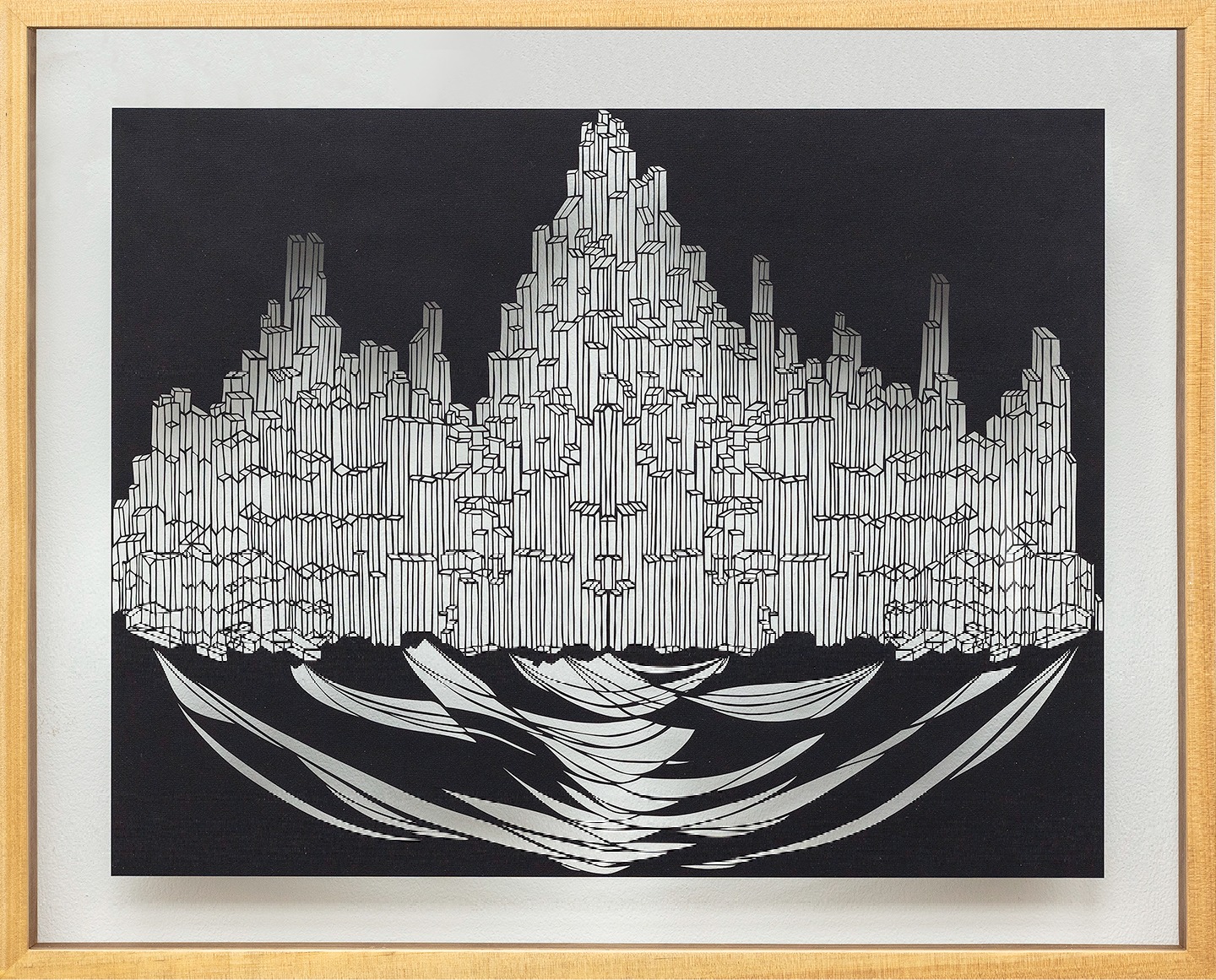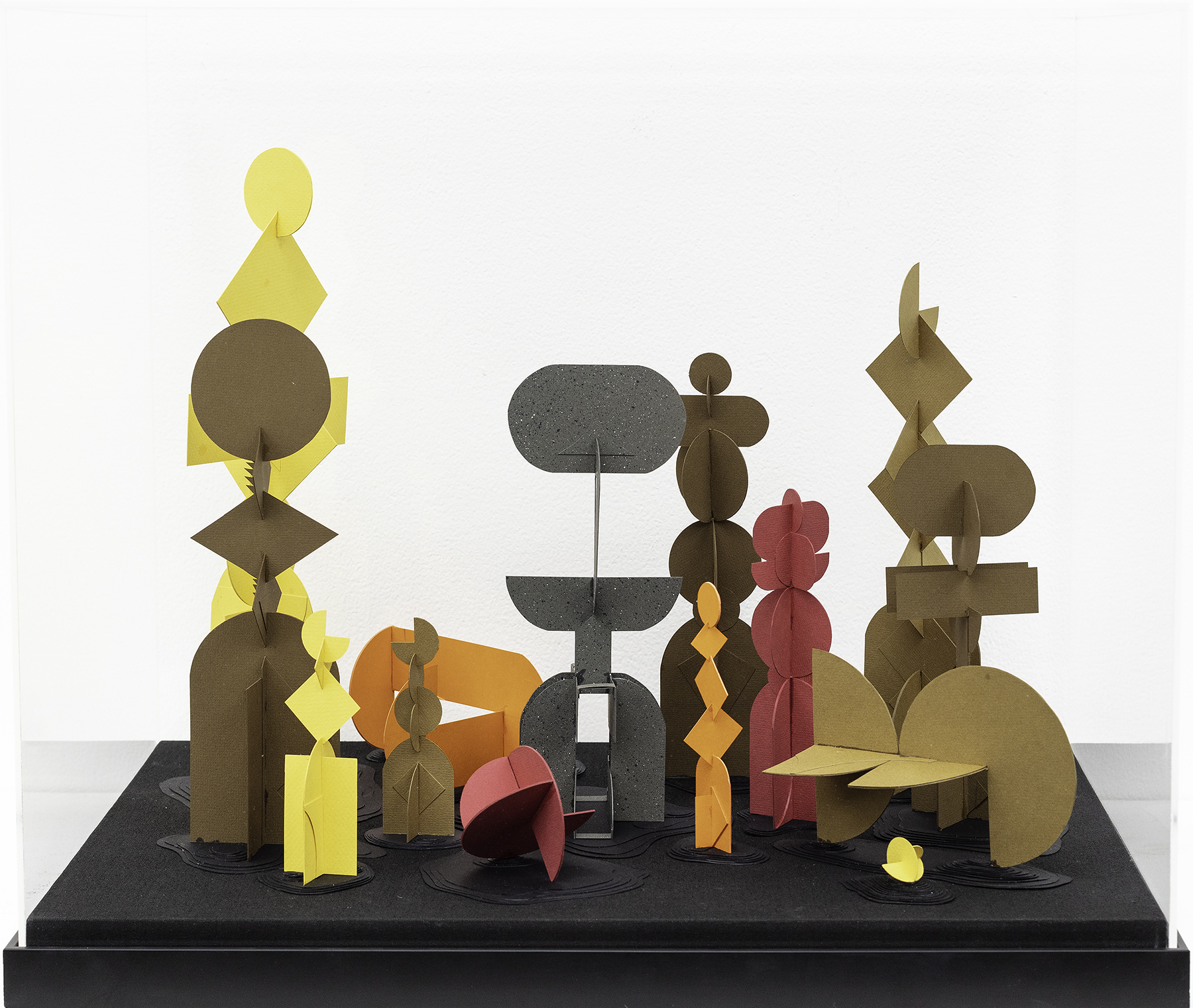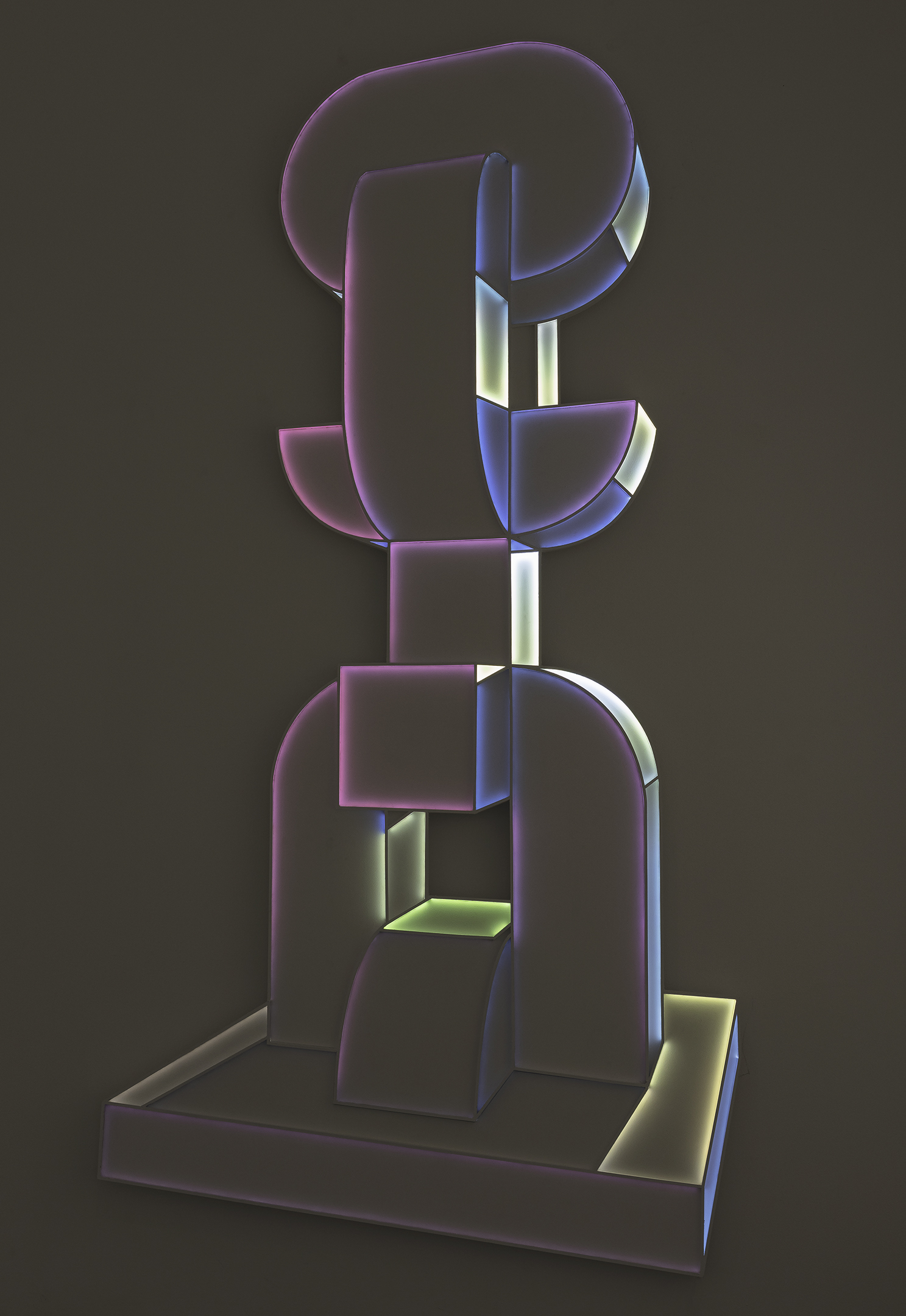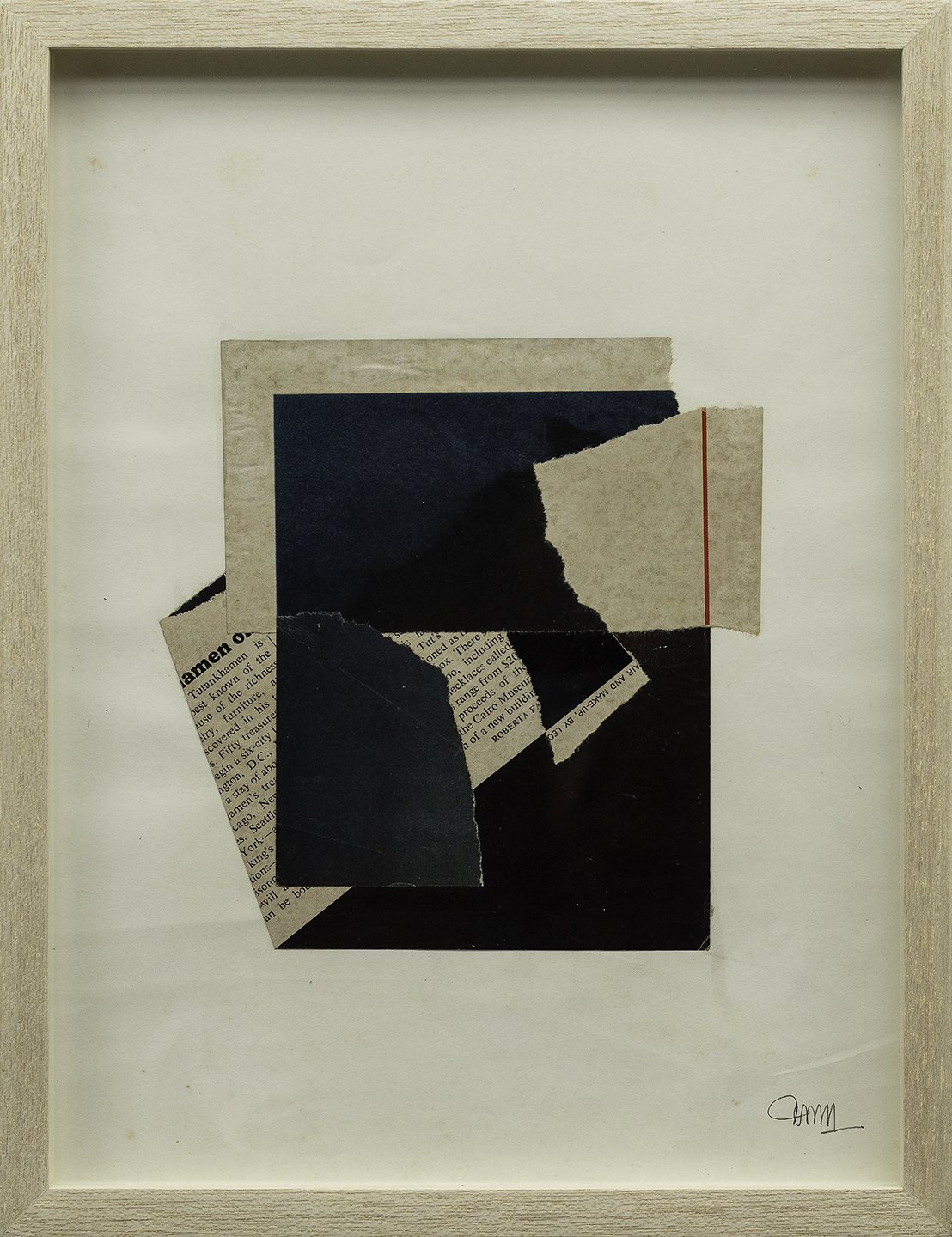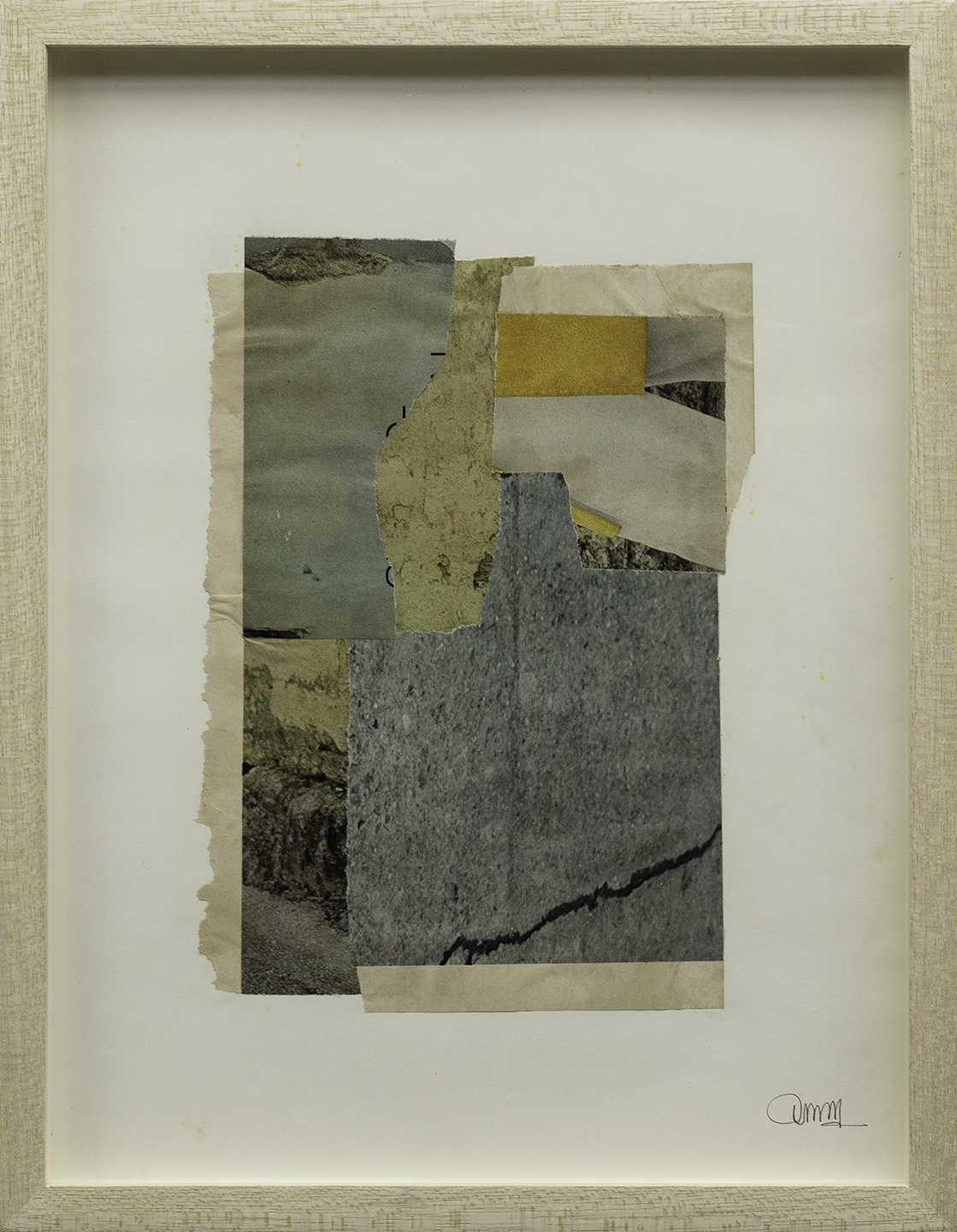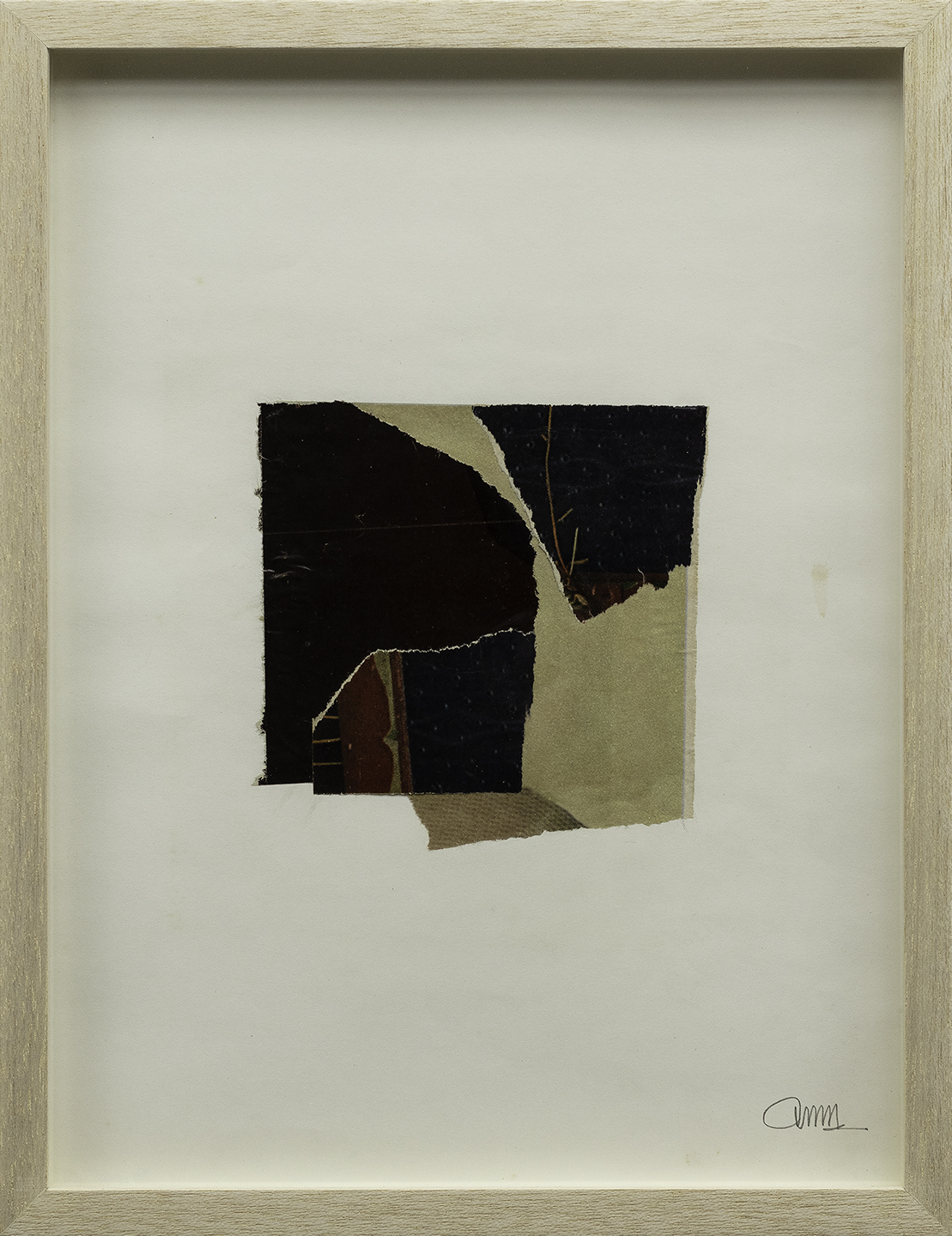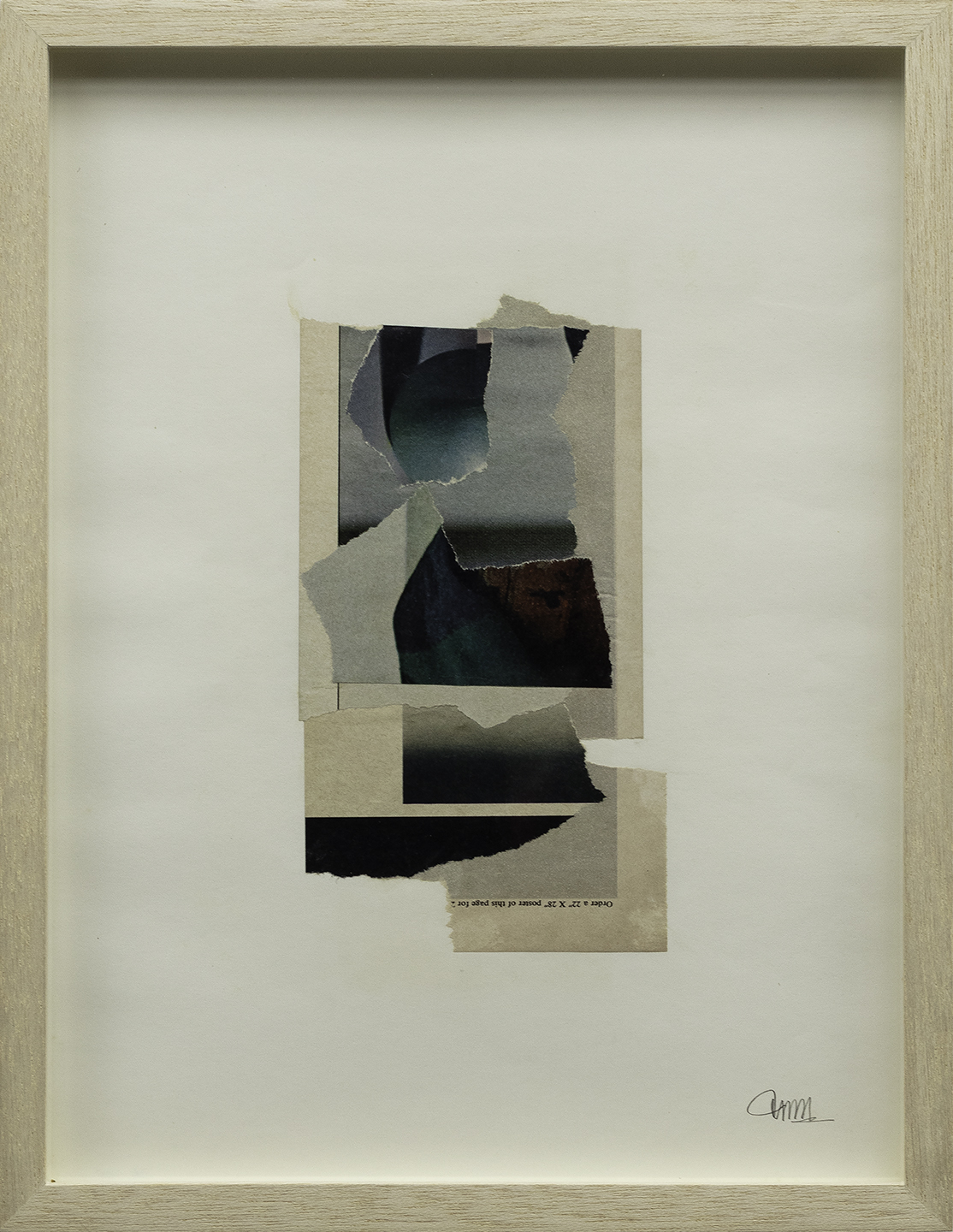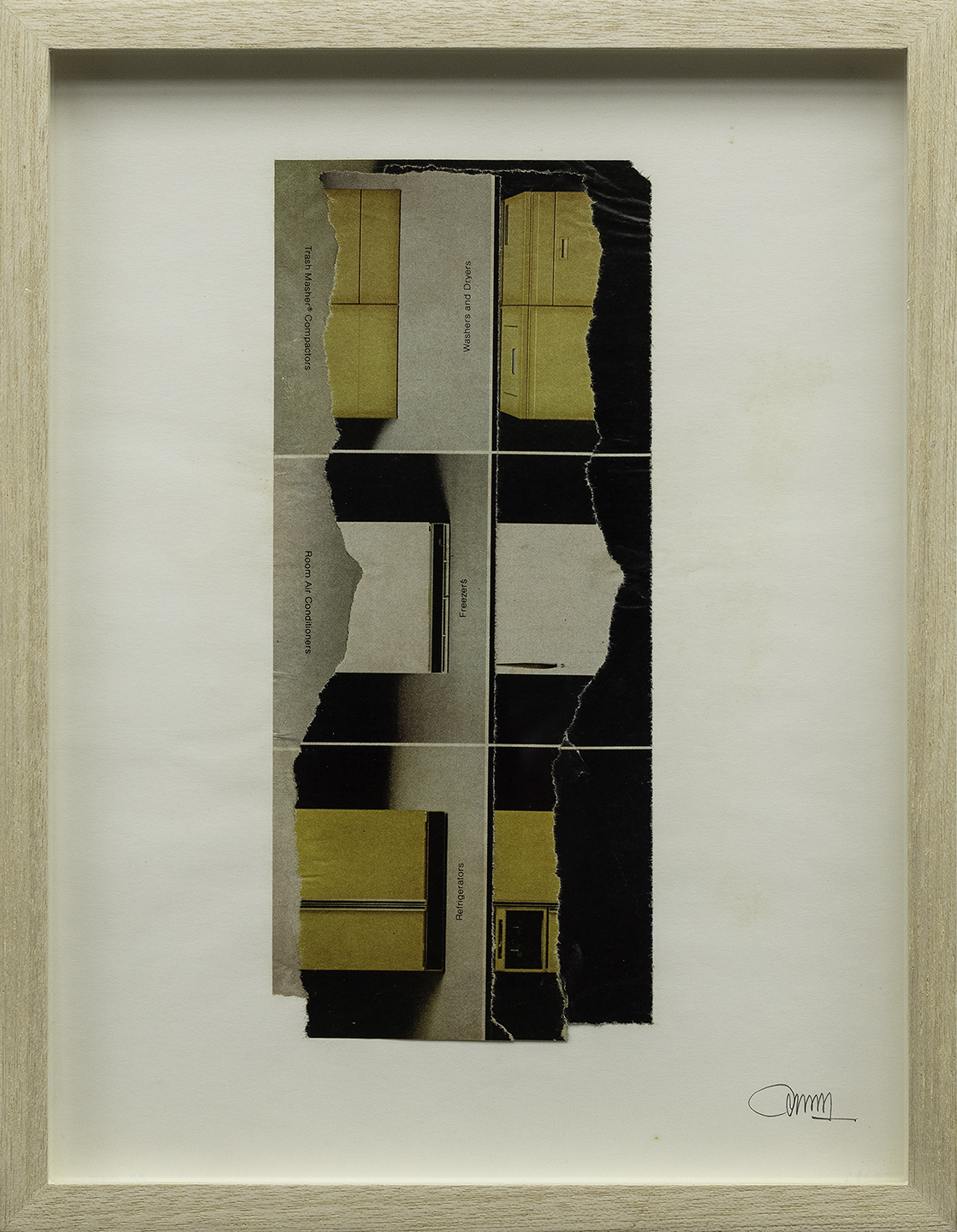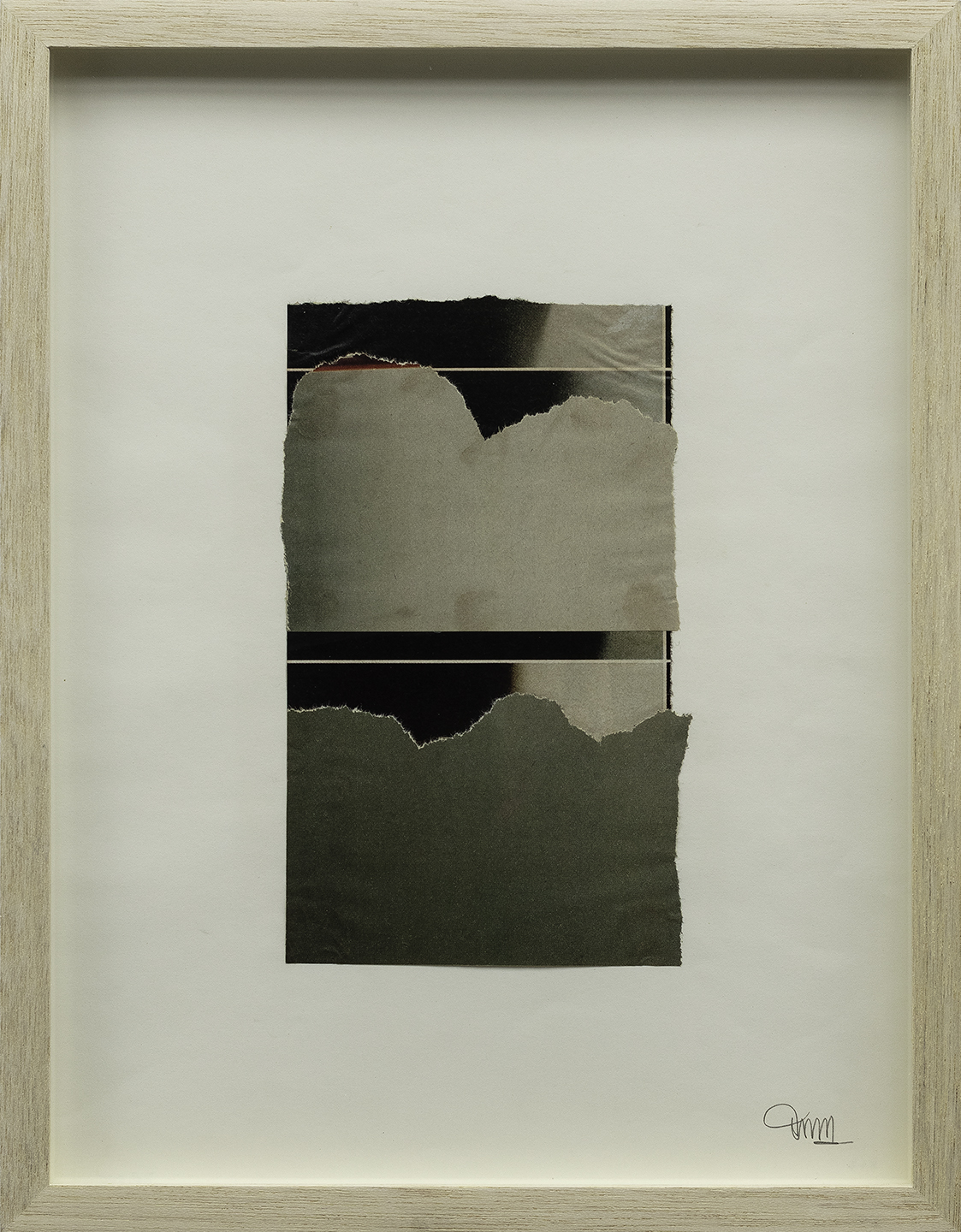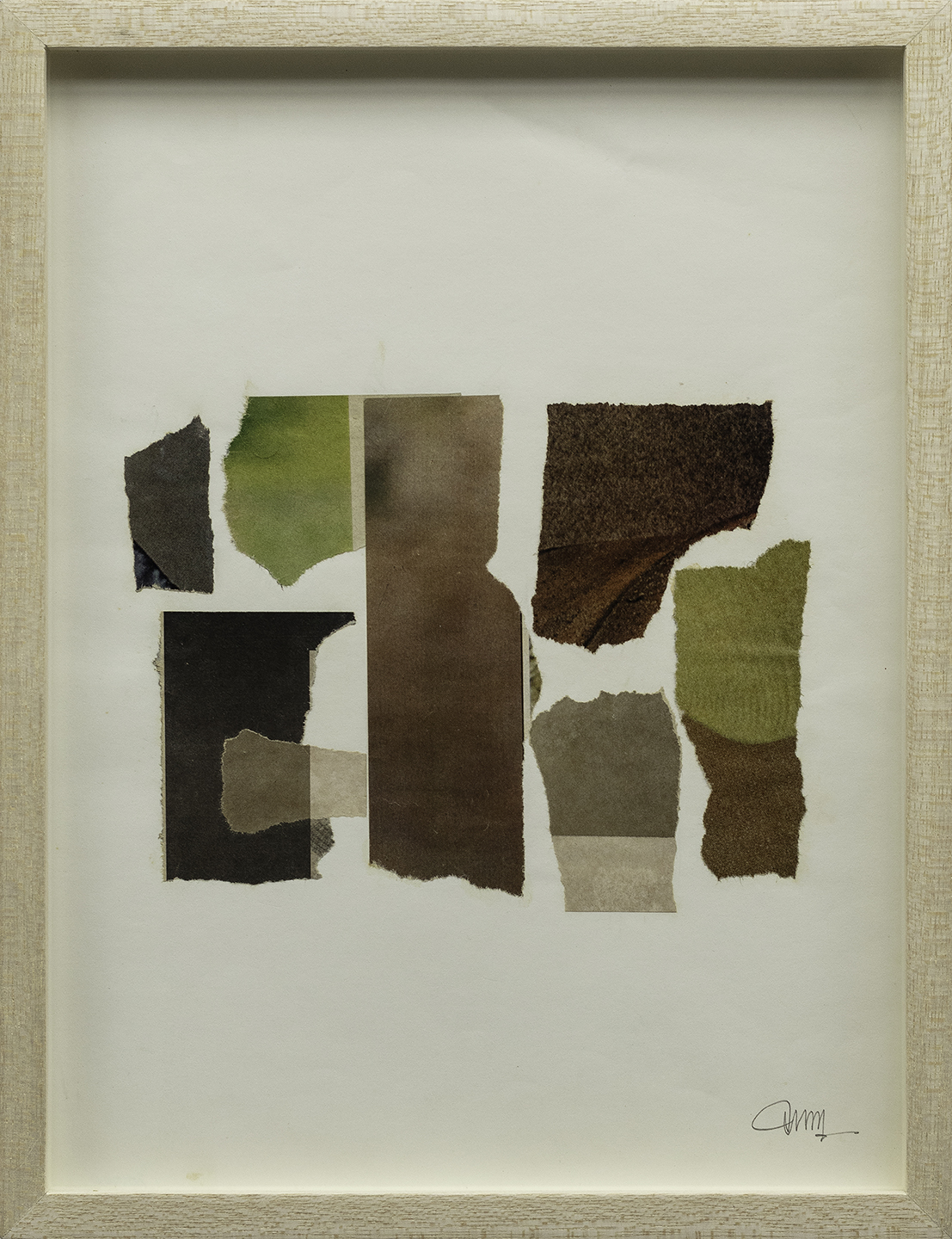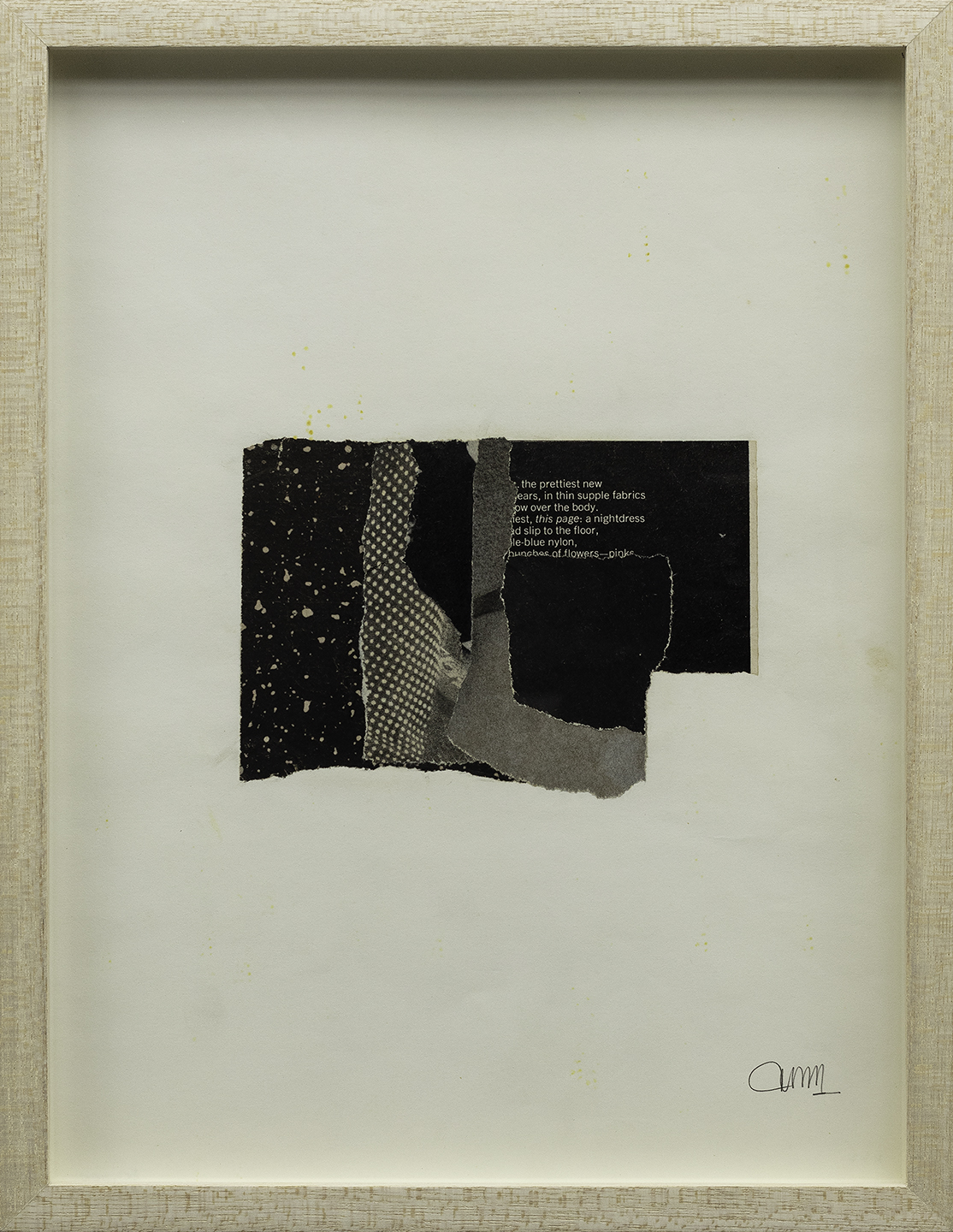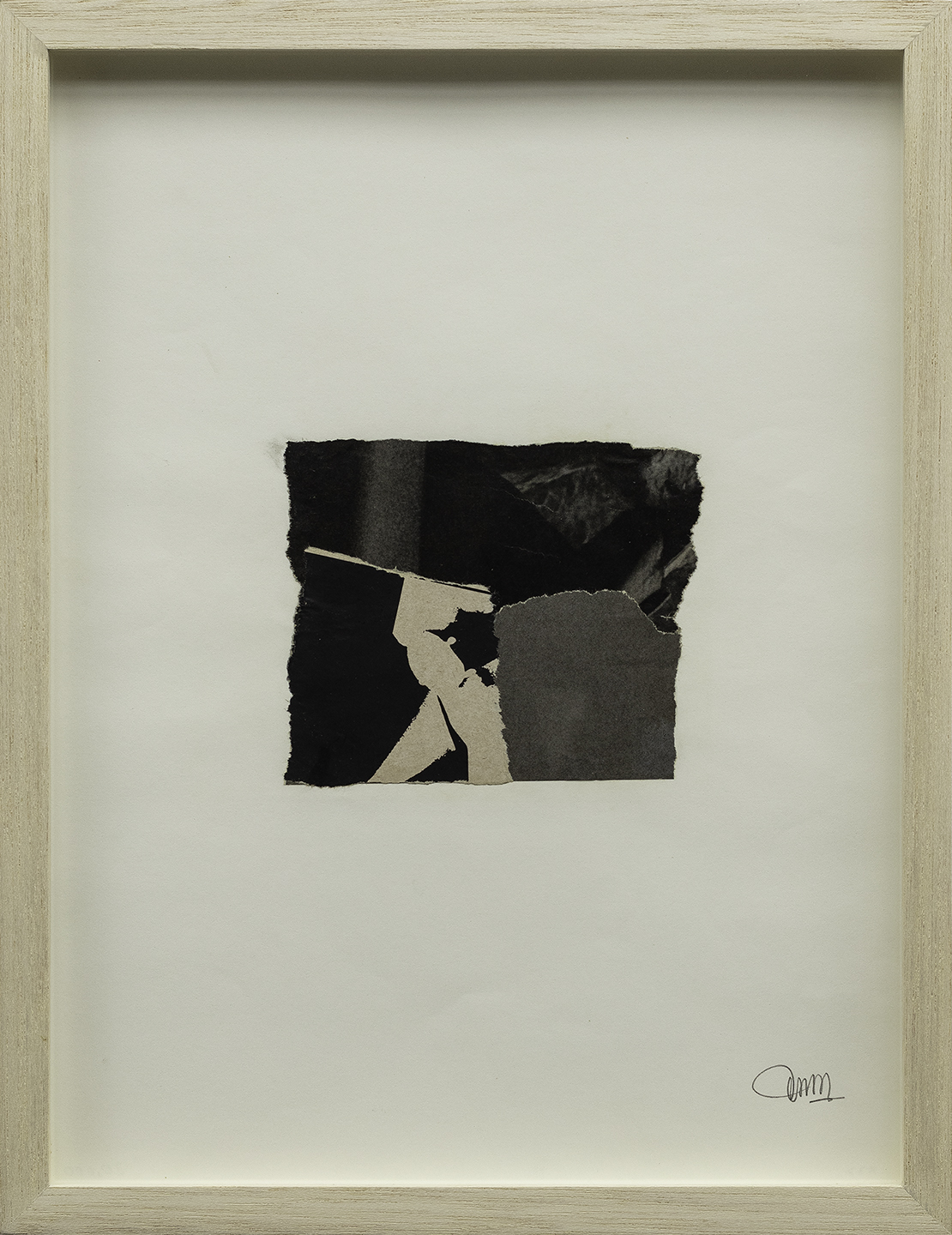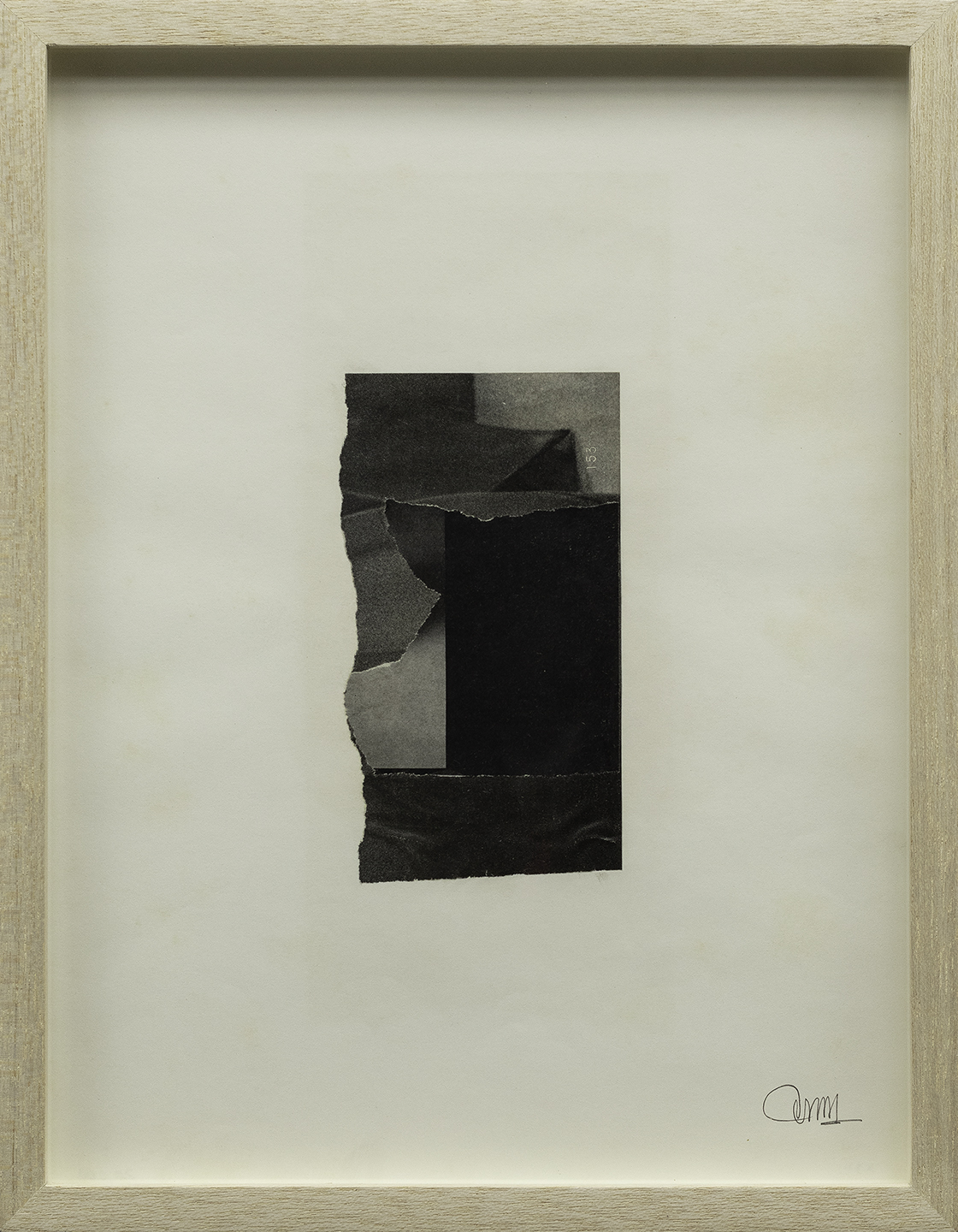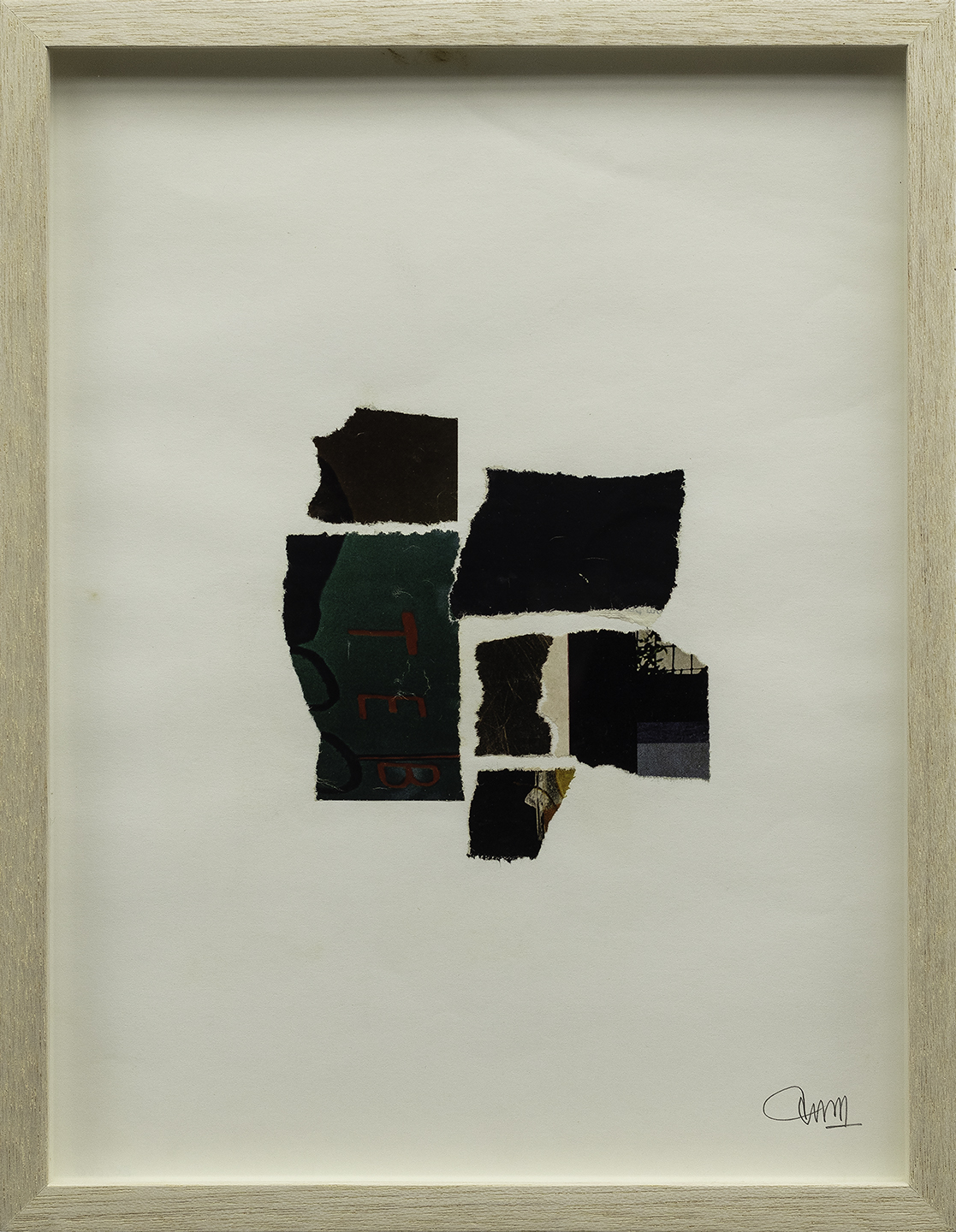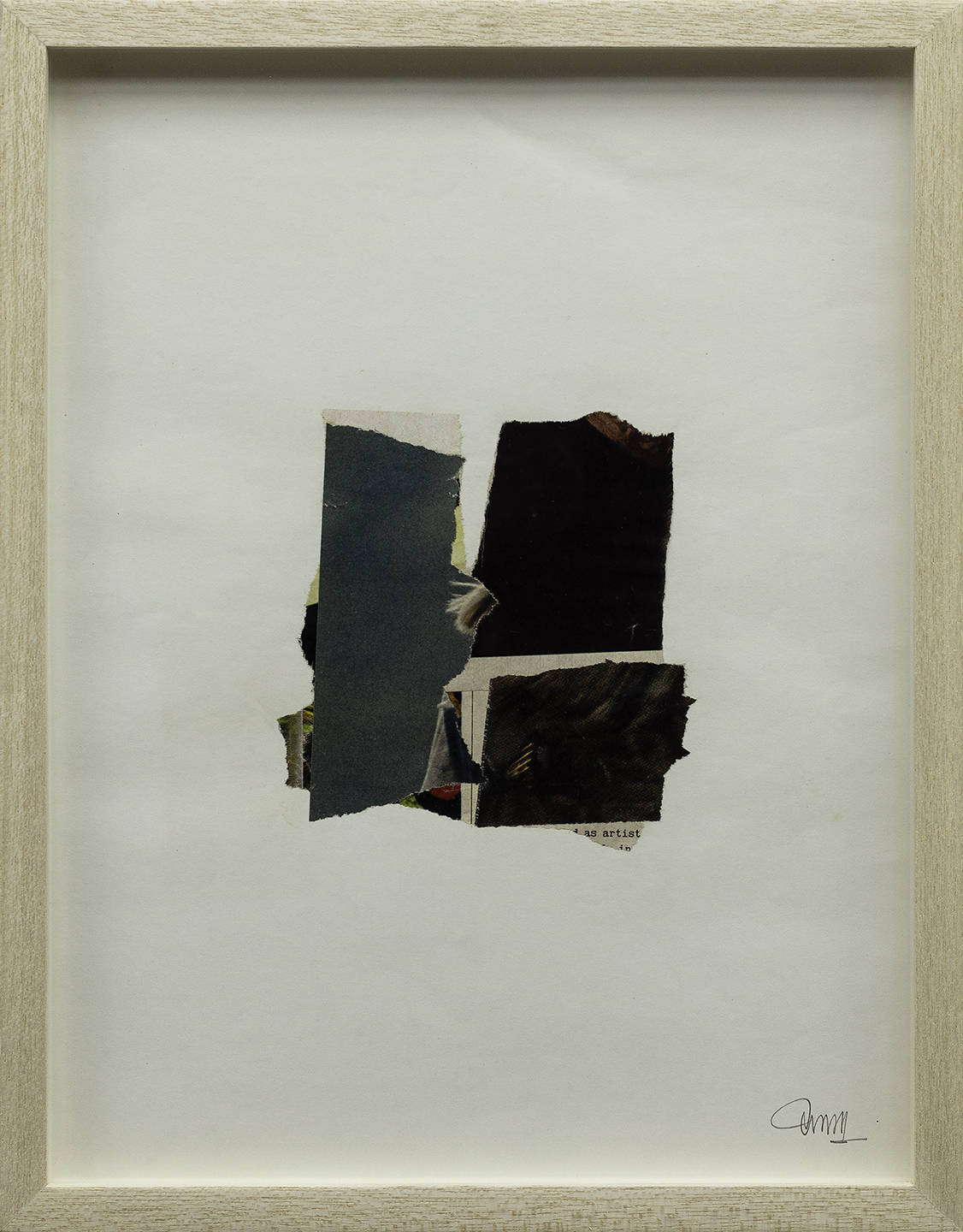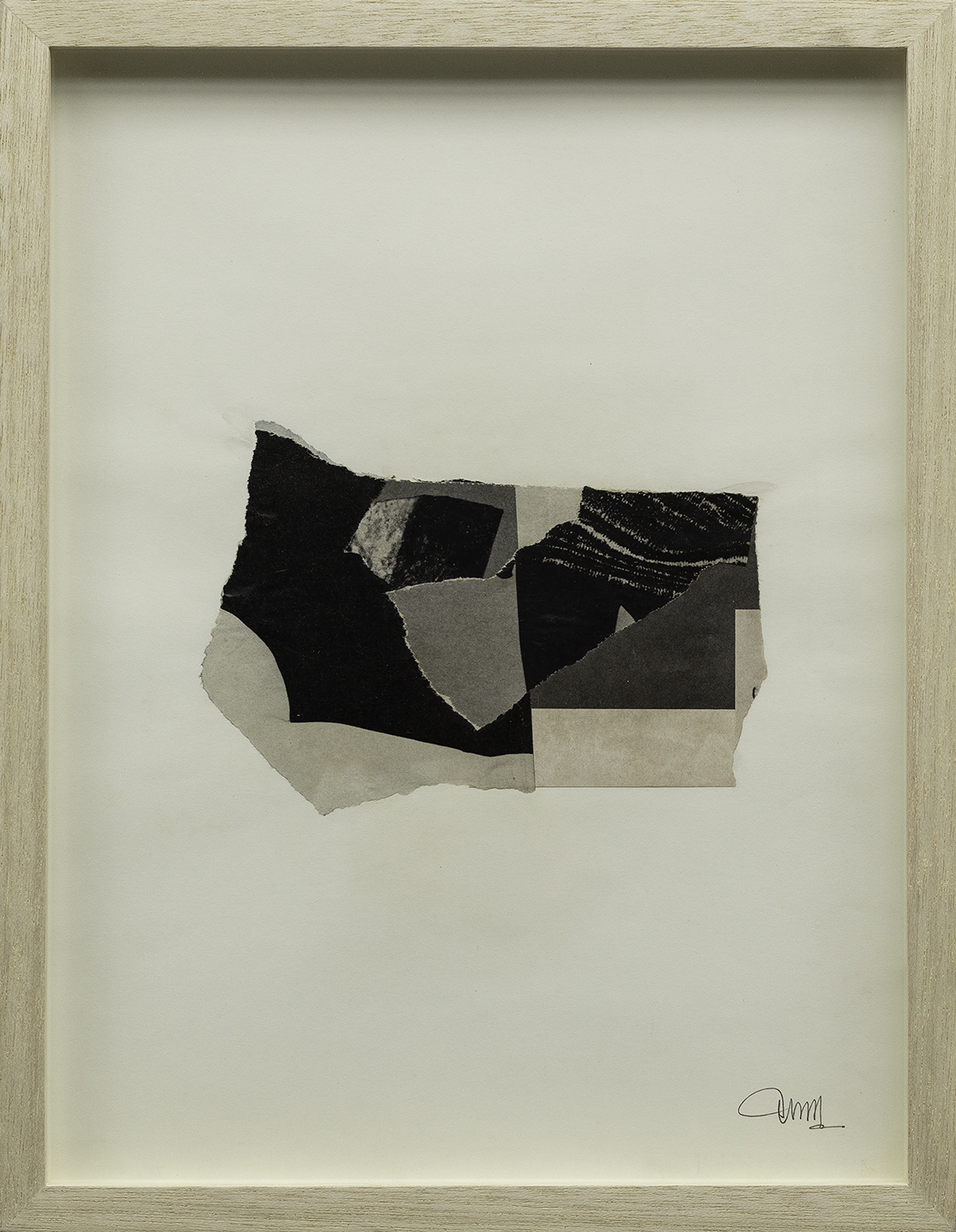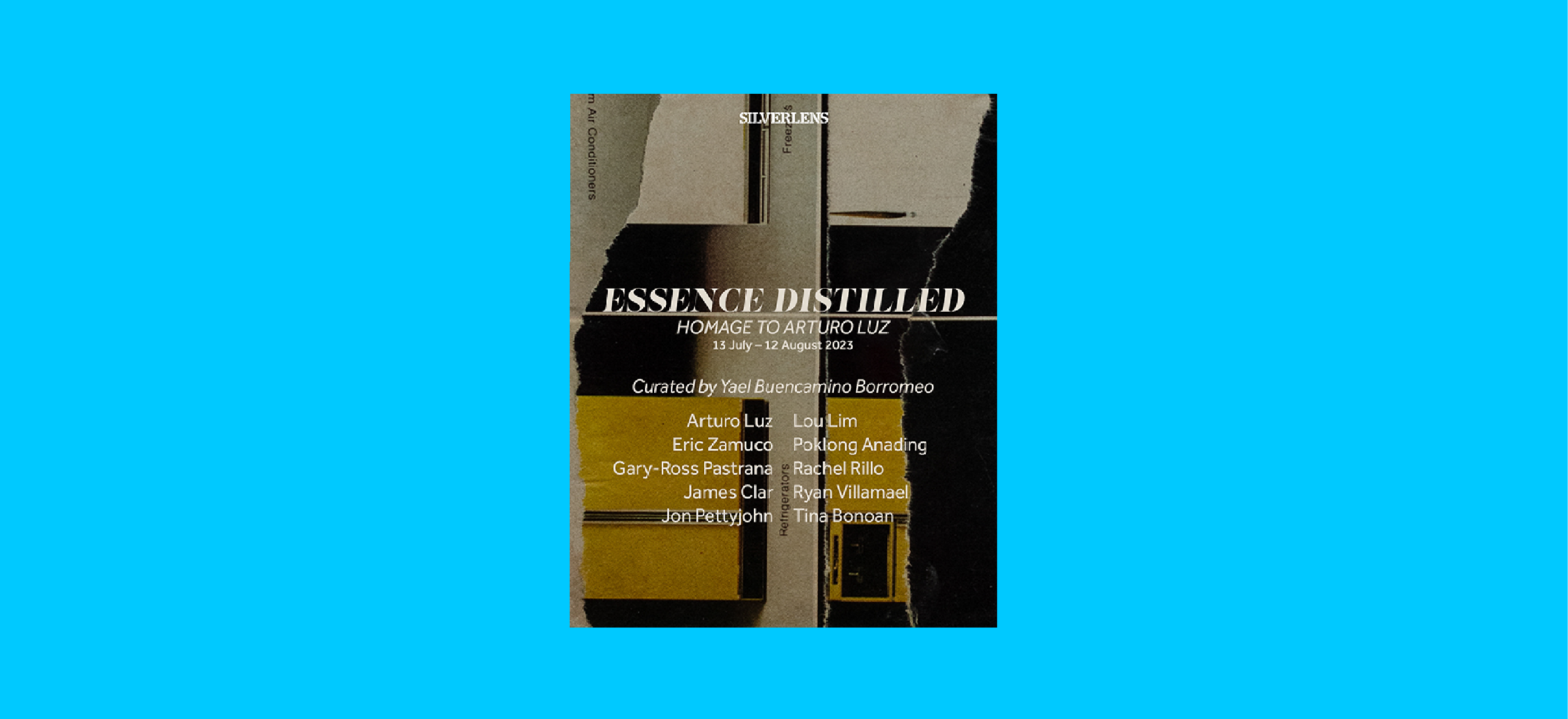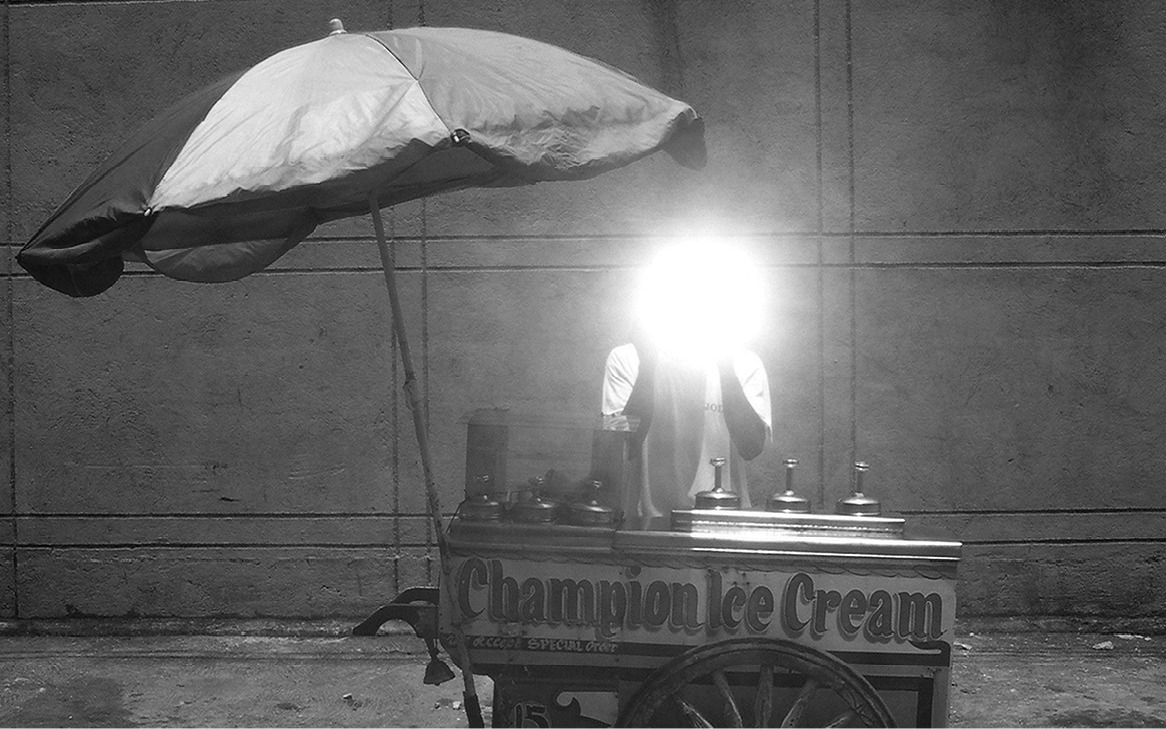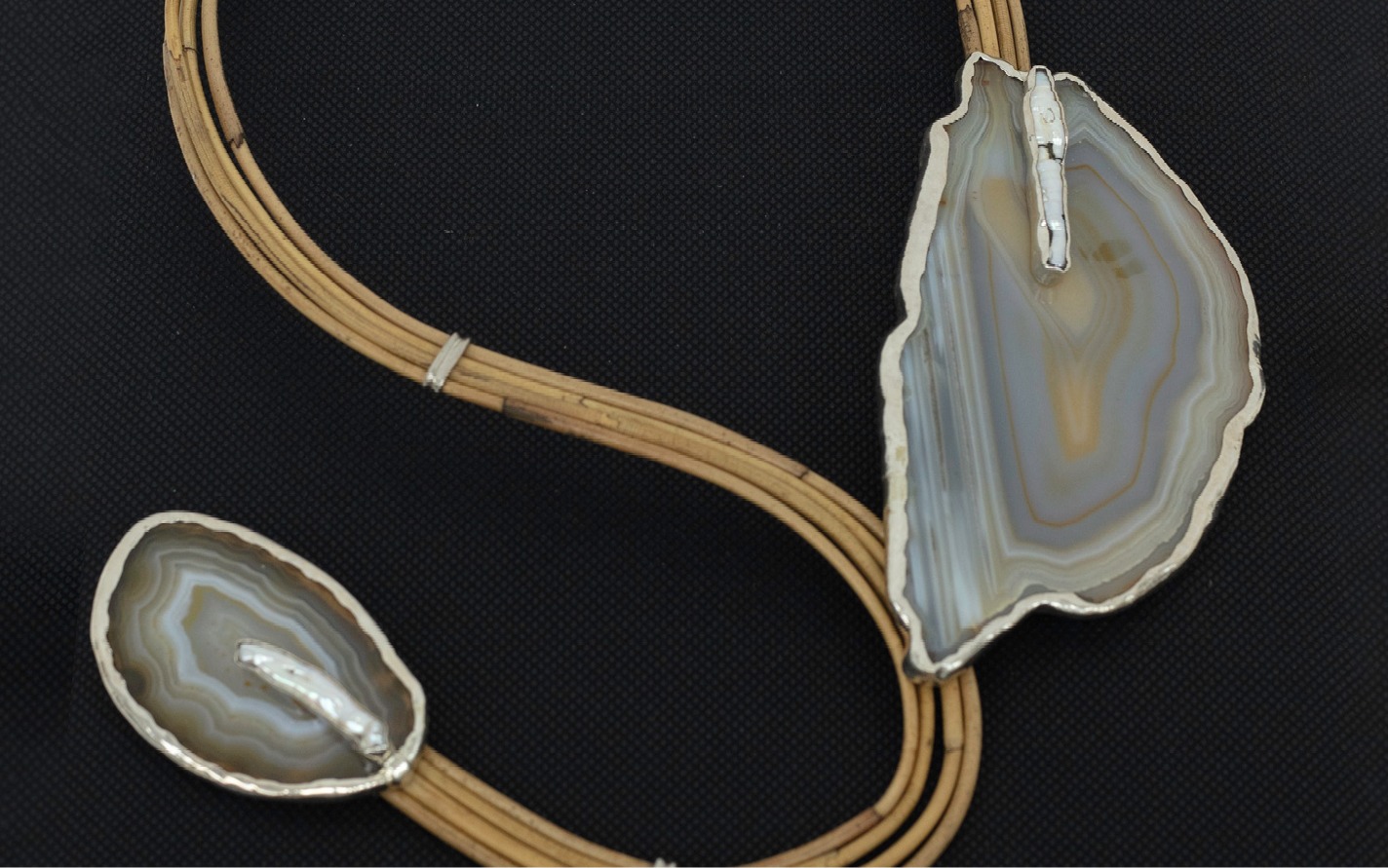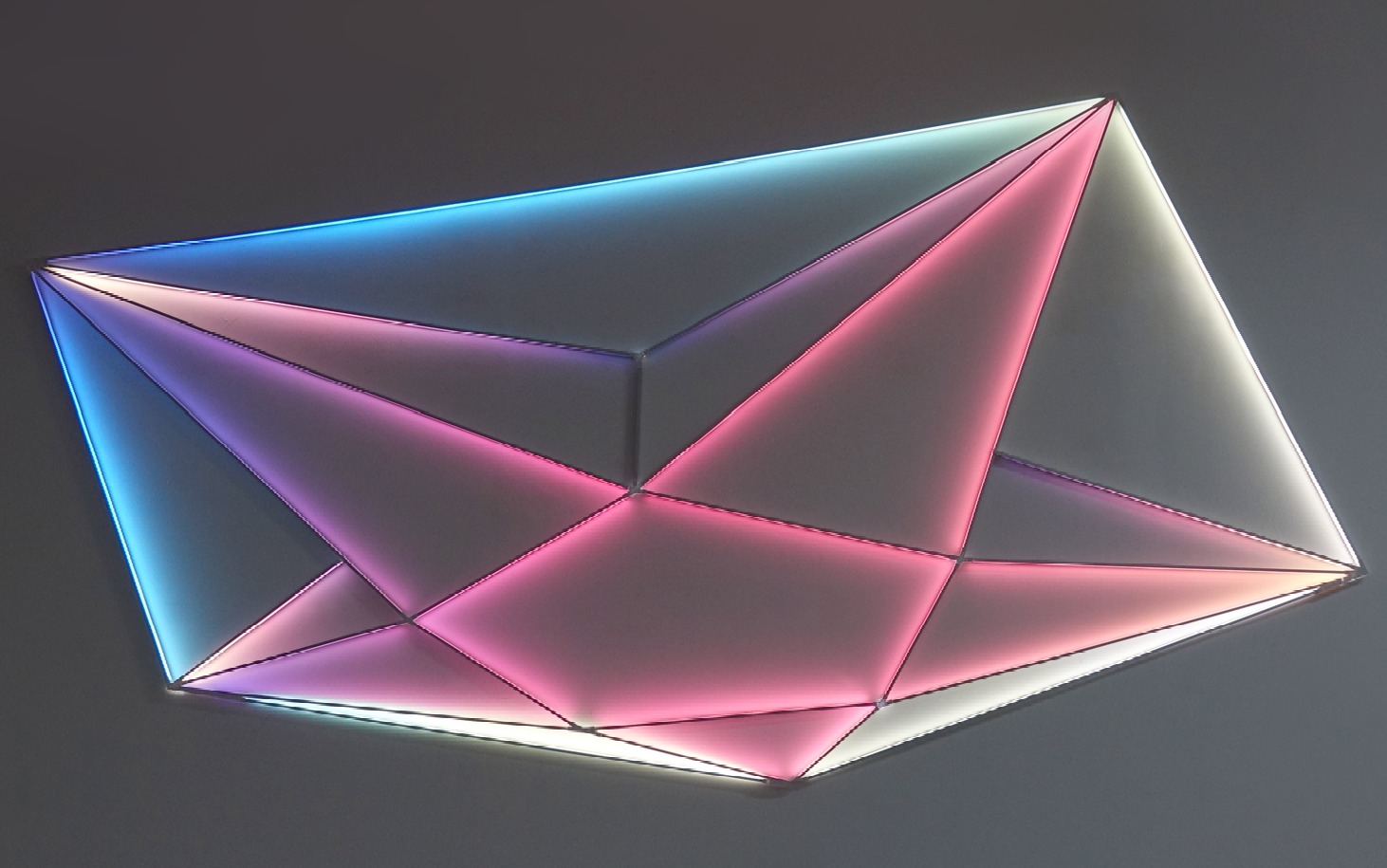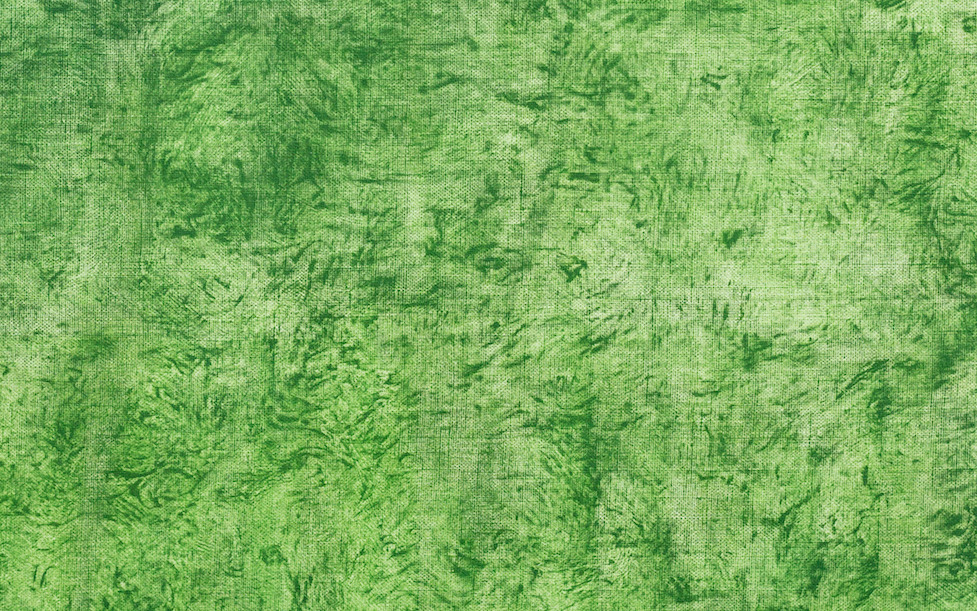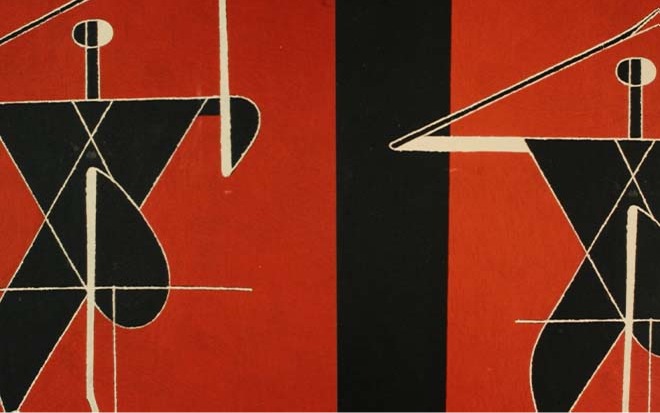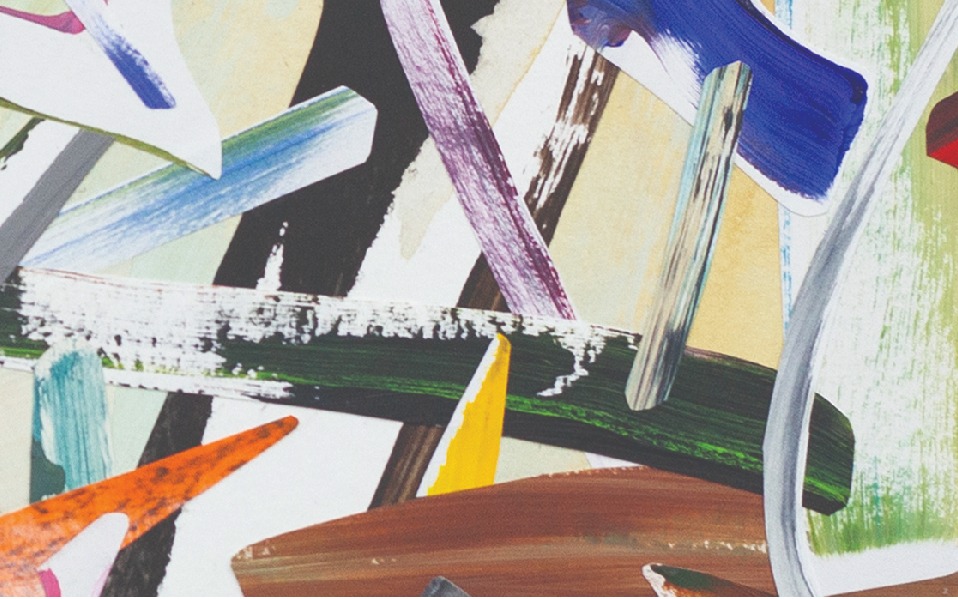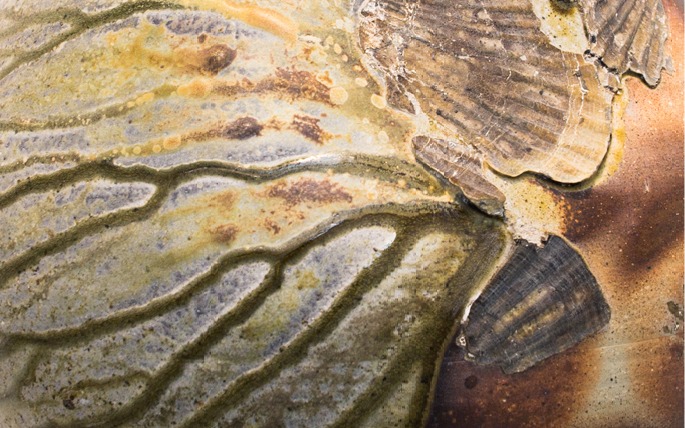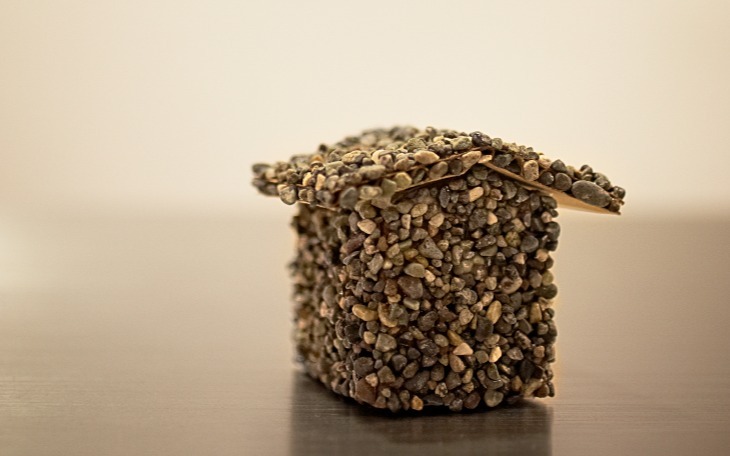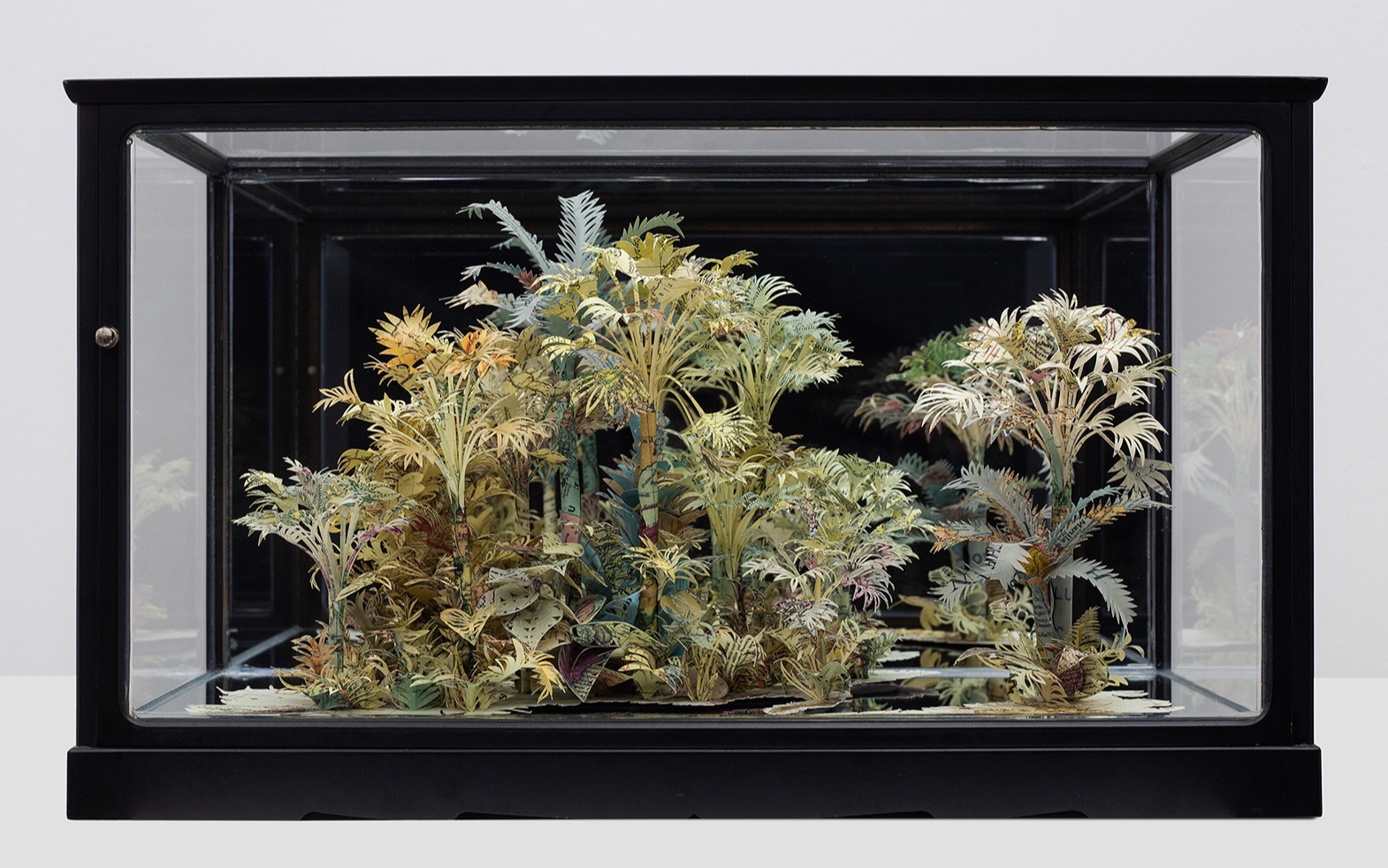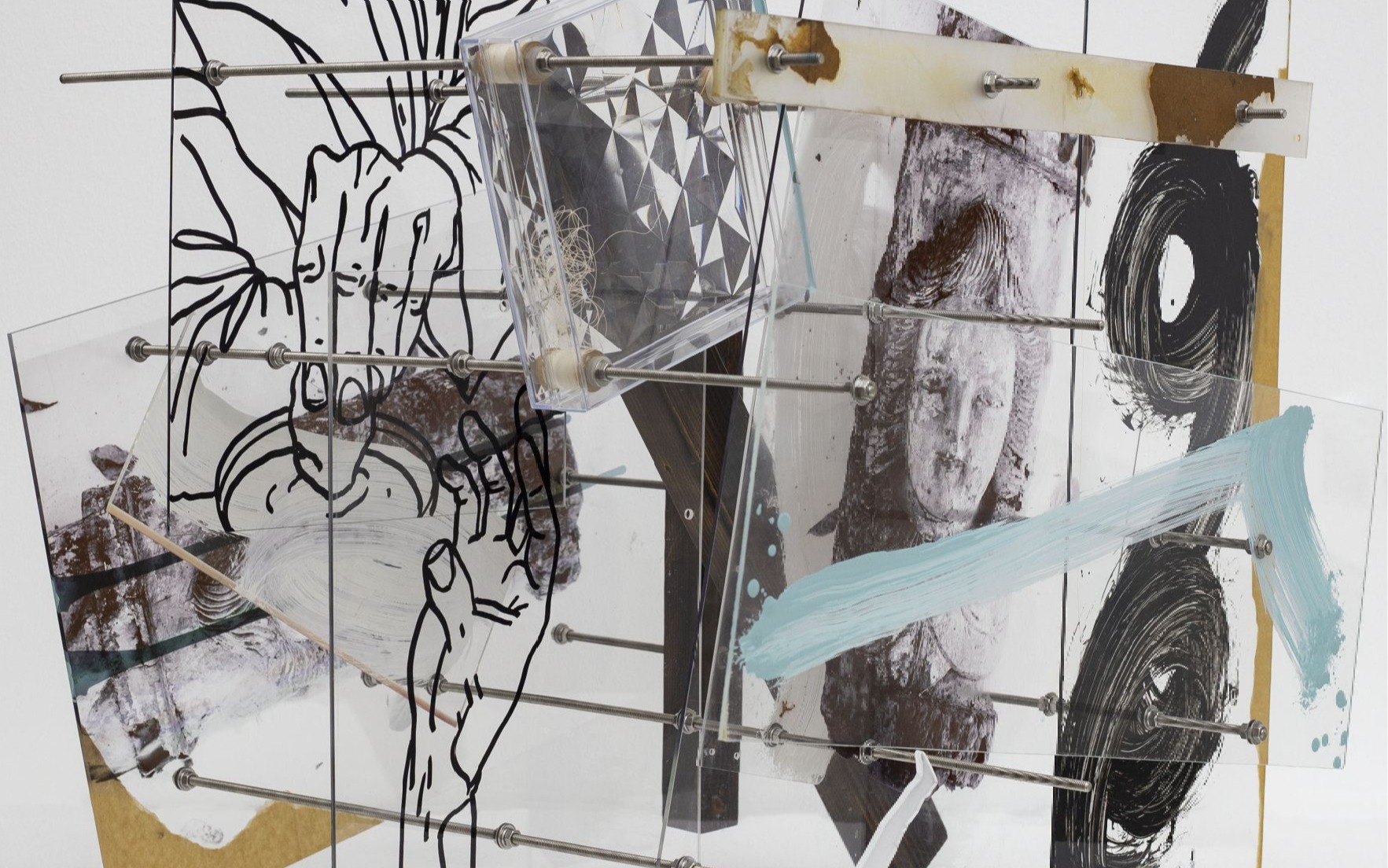
About
A geometric monument in marigold imposes its presence on the threshold of Silverlens gallery. Such is the confidence of an Arturo Luz sculpture that it alters perception of the place in which it sits. Like Eduardo Chilida, the Basque artist he pays tribute to in the black and white metal works nearby, his sculpture is distinct and place-making, leading to commissions for public work that gave full reign to his creative ambition. Scattered throughout Metro Manila in state owned cultural complexes and commercial buildings are stone and steel forms that are public reminders of a career that spanned almost seven decades.
Arturo Luz is both the basis around which the show is built and a participant.
This tribute allows the artist a voice and consciously avoids perceived defining characteristics in his representation. It excavates works of different scales and tenors to reveal the many facets of his practice. In the intimacy of a gallery space his paper collages reveal themselves— abstractions of a different modality from the stark, linear paintings and drawings that audiences expect. In paper and photo-collages, a more experimental Luz emerges, where the spontaneity of torn magazine pages and found images confront his instinct for design.
That his collages, photographs, burlaps and sculpture sit comfortably with the work of artists from younger generations is a testament to the contemporaneity of his sensibility and generative potential of his body of work.
Luz’s Star City photo series reveals an appreciation for raw textures and industrial material that resonates visually with Poklong Anading’s homage to homage pieces.
Anading’s reflective metal scaffold calls attention to the conundrum that any attempt to immortalize the impermanent changes its nature. In the photograph, he makes the andamio’s absence palpable by leaving a blank outline of where the andamio was situated, allowing the wooden panels texture to come to the fore.
Although Lou Lim never met Arturo Luz, she was an obvious choice for this tribute. Sharing with Luz a minimalist aesthetic and a facility for translating artwork across different media, she is able to reduce concepts into simple forms. In The Incarnate, representational cloudscape paintings are cast in silicone, filled with paint and imprinted onto canvas manually. The physicality of the process anthropomorphizes the resulting abstract image. Reconfigured to stand vertically, the work hints at her meditations on the Shroud of Turin.
James Clar’s poetic reflection on artworks as remnants of legacy is rendered through a light installation that mimics the way that light fell on Anito in PICC at sunset on the day Arturo Luz passed away. The solid modernist monument is transfigured into an ethereal play of light and shadow.
The spirit of Luz imbues the work of those that knew him well and worked with him. Tina Bonoan was part of his team in Design Center of the Philippines and his influence is unmistakable. Her calligraphic neckpieces of native vine, freshwater pearls and semi-precious stones embody Luz’s minimalist aesthetics and desire for designers to use local materials in their products.
That Luz was enamored with ceramics is evident in their constant presence in his studio, home and gallery. The pieces of Jon Pettyjohn call to mind the numerous pottery-inhabited still life compositions of Luz. Taking their cue from a series of drawings that Luz had shared with Pettyjohn for him to develop several decades ago but never realized, the work in effect is a posthumous collaboration.
Working with Arturo Luz on his photography show at Silverlens in 2013, Rachel Rillo observed in Luz’s still life photos that he would shoot the same set up several times making minute variations in the position of the objects or the position of the light source. In Seven x Seven, Rillo pays tribute to his repetitive subjects and heavy design hand. She photographs seven plastic containers seven times moving the pieces slightly in between each shot resulting in an abstract image of translucent geometric layers.
Eric Zamuco takes off from Luz’s iconic Anito, referencing its shapes on plexiglass panels. Lodi, an inversion of the word idol, invites the viewer into his ruminations on the concept of gods and worship. Found objects are imbued with spiritual associations and held up for dissection, critique and questioning— sheep skin and cow hide reminiscent of biblical and tribal animal sacrifice; silver and gold, colors of the glorious divine in icons, now used on shoes and jackets that we adorn ourselves with; the drone of termites eating wood and its honey comb looking remnants are portents of destruction … of idols? False gods? Of genuine faith?
Often considered through the lens of Philippine modernism and minimalism, Luz’s early paintings are seen as controlled and quiet despite being representations of carnivals, jugglers, and acrobats. Gary-Ross Pastrana, in collaboration with sound designer Corinne de San Jose, created a score for these paintings to reveal their dynamic nature—a jaunty, jazzy six-minute piece with moments of mechanical sounds bring to mind Luz’s new year’s eve revelers tooting their horns, cyclists, and street musicians. The cacophony of sounds echoes Luz’s own recollection of the inspiration for the paintings from the 1950s. "In Manila, musicians with neither talent nor jobs then made a living by serenading from door to door. They go about in pairs, forming the most unlikely duos, with their clarinet and drum, cymbals and horn. The music is invariably jazz and loud." (From the book Arturo Luz by Cid Reyes)
The sound track animates other pieces in the room allowing us to appreciate the burlap as the ballet that Luz described it to be and the small paper collages as the attempts at spontaneous, instinctive expressions that Luz aimed for.
Ryan Villamael leaves behind his meaning-laden vitrines of foliage as he gives himself over to the formal practice of Arturo Luz. In exploring the oeuvre of Luz, he encountered them afresh and realized the joy and vibrancy of his sculpture, cityscapes and carnivals, leading him to approach the tribute with a sense of play and wonder. He allows us the same re-discovery of Luz by presenting them in the unexpected format of a diorama of miniature paper sculptures and intricate paper cutouts that exude a dynamic energy.
– Yael Buencamino Borromeo
Poklong Anading (b. 1975, Manila, Philippines. Lives and works in Manila) works with a wide range of mediums and is acclaimed for his pieces that investigate photography and travel. Fascinated with the process of creation and permutation, Anading explores different mediums to engage with a range of sociopolitical and environmental questions. He is not driven by an overt agenda, but prefers to let his mind wander—thinking with and through his materials as they undergo their transformations. He frequently uses found objects and discarded materials that lead him to investigate notions of worth and value, and to explore what it means for art to exist inside and beyond capitalist production.
Poklong Anading graduated from the University of the Philippines in 1999 and has been recognized for his work both nationally and internationally. Anading has participated in major Asian Biennials and international exhibitions and has been invited by notable curators such as Mami Kataoka, Alia Swastika, Eugene Tan, and June Yap. His work Counter Acts I was collected and exhibited by the Guggenheim Foundation New York and included in the exhibition No Country: Contemporary Art for South and Southeast Asia in the Center for Contemporary Art in Singapore. Anading has also received numerous awards, including the 12th Gawad CCP for Experimental Video in 2000 and the Thirteen Artists Awards in 2006. His works can be found in the permanent collections of institutions such as the Singapore Art Museum, the Mori Art Museum, and the Guggenheim Foundation.
Tina Bonoan is an accomplished architect and product designer with comprehensive experience in Architecture and Interiors, furniture and furnishings, houseware and jewelry design. She is a licensed architect with a degree from the University of the Philippines. While working in the Design Center Philippines from 1984-1987, she broke new grounds in the field of exhibition and product design. From 1988-1994, Bonoan joined Taller Natural, S.A.–Centro de Diseno in Madrid, Spain, where she cultivated a style that imprinted her modernist virtues in interior and furniture design for international clients, primarily in residential, hospitality and institutional projects.
Upon her return to the Philippines, she established a design oriented furniture-export company, Diseño En Asia, Inc., with innovative rattan furniture and natural shell lighting fixtures. In 1999, she embarked on architectural journalism and created the foremost design magazine for professionals, Bluprint, under the group, Mega Magazine Publications, Inc. (presently known as ONE MEGA Group, Inc). As its editor in chief from 1999-2002, the magazine occupied the firmament as the premier design sourcebook in the country. During the same period, she founded another publication, My Home, a consumer magazine on residential interiors. In 2002, she became a design consultant to CITEM (Center for International Trade Expositions and Missions) Manila’s Manila FAME Gift Fair.
Bonoan was a member of the Board of Directors of the University of the Philippines College of Architecture Alumni Association from 2003-2007. She also served as Vice President of the Heritage Conservation Society from 2002-2004.
From then on, Bonoan focused on her skills on interior design and architecture with residential and hospitality projects in the Philippines. She made her return to product and furniture design, managing the Cebu–based, furniture export company, Swambi, Inc. from 2002-2008. Consummating her entry into the design world, Bonoan explored jewelry design with her cutting edge collections using silver and our indigenous rattan vines. In recent years, she filled the need for unique floral design for special events with Comfortscape, Inc.
Bonoan continues to center on one-of-a-kind projects that require her unique, creative, modern Filipino touch.
James Clar is a light and media artist. His interest is in new technological production processes and their application to artistic narrative forms. He studied film at New York University and received his Masters from NYU’s Interactive Telecommunications Program. It was here that he began developing his own light systems to create visual sculptural works that combine light and technology.
His work explores the conceptual and narrative potential of light and technology. These systems are integrated into our daily lives, altering the way we receive information and communicate. They inform our perception of reality, time, and space. Every system for communication enhances certain types of information while limiting and simplifying others. These modulated effects on our perception have become a thematic focus of his works and a way to experiment with narrative forms.
From 2006 to 2012, James’ studio was based in Dubai where he became an active participant in the developing arts and culture scene, working with Traffic gallery and Carbon 12. From 2012 till 2020 he moved back to New York, and in 2021 relocated back to his native Philippines to work with Silverlens gallery within the Asian region.
Clar was an artist in residence at Eyebeam Atelier in New York, Fabrica in Italy, and the FedEx Institute of Technology/Lantana Projects in Memphis. His artwork has been included in exhibitions at Glucksman Museum (Dublin), The New Museum of Contemporary Arts (New York), Pera Museum (Istanbul), Cam Francis Museum (Barcelona), MACBA (Barcelona), and SeMA (Seoul). He has been commissioned to develop large-scale installations for 21c Museum Hotels (Oklahoma), Parasol Unit Foundation for the Arts (UK), and Fraport Headquarters (Frankfurt). James Clar is represented by Silverlens and Jane Lombard Gallery.
Lou Lim (b. 1989) invests in the connection between the corporeal and the spiritual, between materiality and notions of permanence, between objects and visual imagery, and in what these relations articulate. Her works examine the processes and methods of different art forms to further investigate sculpture, creating new contexts for the familiar by exploring ideas and potentialities of surface and touch. Part of her methodology involves appropriating the medium of painting in creating or extracting sculptural forms, and vice versa: simulations of skin, the embodiment of phenomena such as horizons.
Lim earned her BFA from the University of the Philippines College of Fine Arts and has been actively exhibiting work since 2011. She was resident at Palais de Tokyo in Paris and the SeMA Nanji Residency in South Korea under the Pavillon Neuflize OBC 2015-2016 program. These participations resulted in a collaborative performance at the Opera de Paris and in group exhibitions at ICA Singapore and the Seoul Museum of Art in South Korea, as well as in a publication with INA [Institut National Audiovisuel].
Arturo Luz (1926 – 2021, Philippines) was a painter, sculptor, printmaker, photographer, designer and art administrator at the Design Center of the Philippines (DCP), Metropolitan Museum, (MET) Museum of Philippine Art (MOPA) and his very own “THE LUZ GALLERY” which featured a lot of highly acclaimed artists like Joya, Sanso and Bencab.
He acquired the Philippine’s highest honors as National Artist of the Year for Visual Arts in 1997.
His studies include enrollment in University of Santo Tomas College of Architecture and Fine Arts (1947), California College of Arts and Crafts in Oakland (1947), Brooklyn Museum of New York Art School (1949), Academie de la Grande Chaumiere Paris, France (1950) and Instituto de Cultura Hispanica (1954).
Luz has produced art pieces throughout more than 60 years of his craft, described as playful linear works influenced by artist Paul Klee. His best masterpieces are minimalists, geometric abstracts alluding to the modernist virtues of competence, order and elegance. His works exhibits simple linear and geometric forms created from imagination, as characteristic in pieces like Carnival Forms, Cityscapes, Musicians, Acrobats and Desert Architecture.
When asked, he mentioned “ART IS FOR ALL”. It is on this note that the LUZ Family is sharing his legacy through their collection of his famous works.
Gary-Ross Pastrana’s (b. 1978, Manila, Philippines; lives and works in Manila, Philippines) art has been one of the most persistent in terms of combining concepts with objects. His conceptual pieces, although loaded with poetic intensity, remain unobtrusively subtle and even almost quaint in their appearance. Coiled photographs, woven tales from found pictures on the internet, sawed off parts of a boat shipped to another country, his shirt tied into a pole to commensurate a flag, these are the slightest of turns Gary-Ross has his objects make to create a new text within.
Pastrana received his Bachelor's degree in Painting from the University of the Philippines, where he was awarded the Dominador Castañeda Award for Best Thesis. He has gained considerable experience and exposure within the region, with residencies in Bandung, Kyoto, Bangkok and Singapore. In 2006, Pastrana received the Cultural Center of the Philippines’ Thirteen Artists Award. Since then, he has shown at the Singapore Art Museum, Metropolitan Museum of the Philippines, the Jorge B. Vargas Museum, and was part of the 2019 The Art Encounters Biennial in Romania, 2019 Singapore Biennale, 2012 New Museum Triennale in New York, 2010 Aichi Triennale, and 2008 Busan Biennale. In 2004, he co-founded Future Prospects art space. In addition to his artistic career, Pastrana curates and organizes exhibitions in Manila and abroad.
Exhibitions include Erstwhile Maps, CASE Space Revolution, Bangkok, Thailand (2020); Every Step in the Right Direction, Singapore Biennale, Singapore (2019); The Art Encounters Biennial, Romania (2019); An Opera for Animals, Para Site, Hong Kong (2019), Rockbund Art Museum, Shanghai (2019); Utopia Hasn’t Failed Me Yet, Silverlens, Manila (2018, solo); The Extra, Extra Ordinary, Museum of Contemporary Art and Design, Manila (2018); The Other Face of the Moon, Asia Culture Center, Gwangju (2017); Clock, Map, Knife, Mirror, ROH Projects, Jakarta, (2016, solo); Summa, Vargas Museum, Manila (2014, solo).
Jon Pettyjohn (b.1950, Okinawa, Japan), together with wife Tessy, is considered one of the pioneers of contemporary Philippine ceramics. For the past 38 years he has worked passionately in the realm of high fire Asian style ceramics. Although mostly functional he also sometimes explores the boundaries between the utilitarian and the sculptural, which he feels strongly, are of equal importance. The exploration for and use indigenous natural materials like clay, stones and ashes for ceramics are one of his major focus. Since 2000 he has concentrated on woodfiring using Anagamas (cave kilns) known for their rich natural glaze affects.
From a handful of contemporary potters in the 1970’s the ceramic scene has grown exponentially in part from the Pettyjohn’s influence on a new generation of clay artists many of whom have been their apprentices or students.
Rachel Rillo is Co-Director of Silverlens Galleries. She runs Silverlens' creative and media team, directs and programs content used for OVRs, online events, website, and social media.
With a background in art history, and an artist working with photography before directorship at Silverlens, Rillo is hands-on with the conservation, presentation, and handling of artwork in and out of the gallery.
Ryan Villamael (b. 1987), as the foremost artist working with paper as sculptural medium, has been exploring themes, tensions, and trajectories of his chosen material since his first solo exhibition, Cut Felt, a decade ago at Silverlens, which currently represents him. Beginning with a tactile and intuitive approach into one of the most delicate—and historically enduring—human inventions, which entailed cutting out shapes, details, and holes without a pre-planned design and resulted in a staggering array of abstract metamorphoses, Villamael then shifted his attention to how paper could become a locus of multiple and overlapping meanings, through which ideas on the natural world, domestic sphere, and urban landscape may be negotiated.
The artist’s main preoccupation is space—from the literal expansive flatness of paper to the metaphorical representation of a home to a more conceptual re-imagination of a city or a landscape. (Rather than through cutouts, a recent pursuit allows him to evoke topographies through the direct application of paint.) From the contained platform of a book to the vaulting hall of a museum, his works emerge, ramify, and sprawl, underscoring how the fragility of paper, through Villamael’s deliberate and thoughtful interventions, can serve as a building block to more imposing creations on a monumental scale. Possibly the most representative of this idea is his Locus Amoenus series—a breathtaking installation of creeping flora fashioned from maps—which has proliferated in different arrangements and in different locations: from Singapore to Manila to the Shiga Prefecture in Japan.
As Villamael’s process involves the surgical precision of cutting, snipping, and blading away fragments of paper, Villamael’s oeuvre is underscored by a narrative of deconstruction and loss as it simultaneously offers a terrain of shifting sentiments, an improvisatory view of a city, a reclamation of a lost paradise. By using archival materials—such as books, maps, photographs, blueprints, and letters—as base for his works, Villamael intercedes into the nature of documentation itself and interrogates the primacy of the printed matter. This enables him to reconfigure it as a site for poetic meditations on the limits and possibilities of history, on the artificial demarcation lines of geography, on the folly and glory of the human enterprise.
From this tension between surface and negative space, between construction and destruction, Villamael is able to materialize something thoroughly autobiographical and fictive from the groundwork, or paperwork, of so-called authoritative texts, made possible by the transformative labor of human hands. Observed this way, his works are a distillation of the grand themes into something intimate, familiar, and felt, as a way of making sense of the sweeping and alienating notions present within the territory of competing powers. While Villamael’s devotion to theme and technique is granular, his body of work opens up to a comprehensive version of the world, through which the contact points between the contours of self and the borders of space prompt fresh vistas where human history and destiny may be re-examined and recast.
Villamael’s works, ranging from stand-alone soft sculptures to large-scale pieces to immense installations, have gone far and wide. In 2015, his exhibition, Isles, received the Ateneo Art Award, which presented the artist studio residency grants at La Trobe University Visual Arts Center in Bendigo, Australia, Artesan Gallery in Singapore, and Liverpool Hope University in Liverpool, United Kingdom. The following year, Villamael participated in the Singapore Biennale and, in 2018, in the Biwako Biennale in Japan. He has exhibited at the Palais de Tokyo in Paris, MAIIAM Contemporary Art Museum in Chiang Mai, Para Site in Hong Kong, Mizuma Gallery and the Arts House in Singapore, ROH Projects in Jakarta, and the Metropolitan Museum in Manila. Currently, Villamael divides his time between Los Baños and Manila.
Eric Zamuco’s (b. 1970, Manila, Philippines) body of work has been about filtering the ordinary and the unfamiliar. It has persisted to be about responding to objects, materials, and circumstance, in a particular time and place. Zamuco’s themes run the gamut from views about dislocation, identity, post-colonial narratives, spirituality, and geopolitics to the need for the reclamation of space. His works, which are of a diverse range of media, include sculpture, installation, photography, drawings, video, and performance, serve not only as social commentary but also as self-critique. The intention in transforming the commonplace is to pull the immaterial and possibly find knowledge for some kind of human order.
Zamuco was a recipient of the Thirteen Artists Award (2003), the Ateneo Art Award (2005), and holds an MFA in Sculpture (2009) from the University of Missouri-Columbia. He was an artist-in-residence at the Centre Intermondes, France in 2015. "Working on the Mountain" is Zamuco's 6th solo exhibition at Silverlens Gallery.
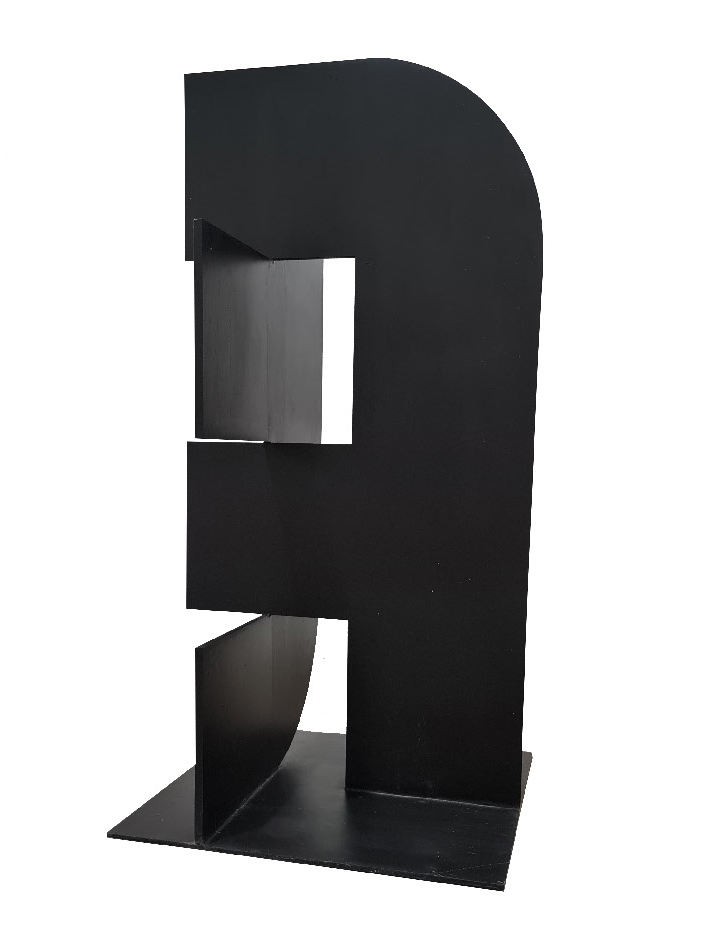
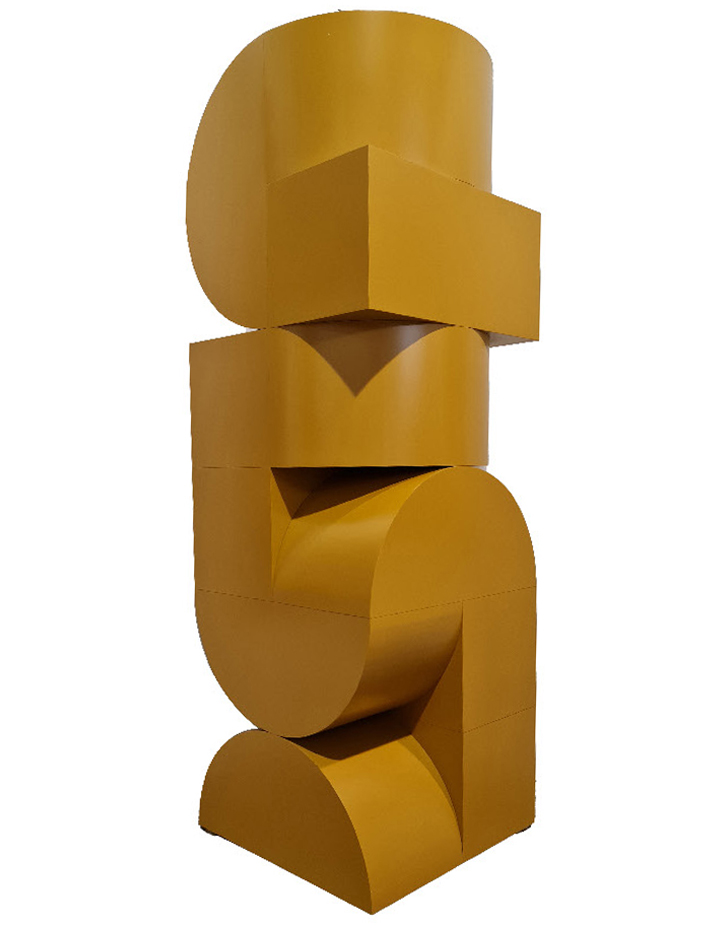
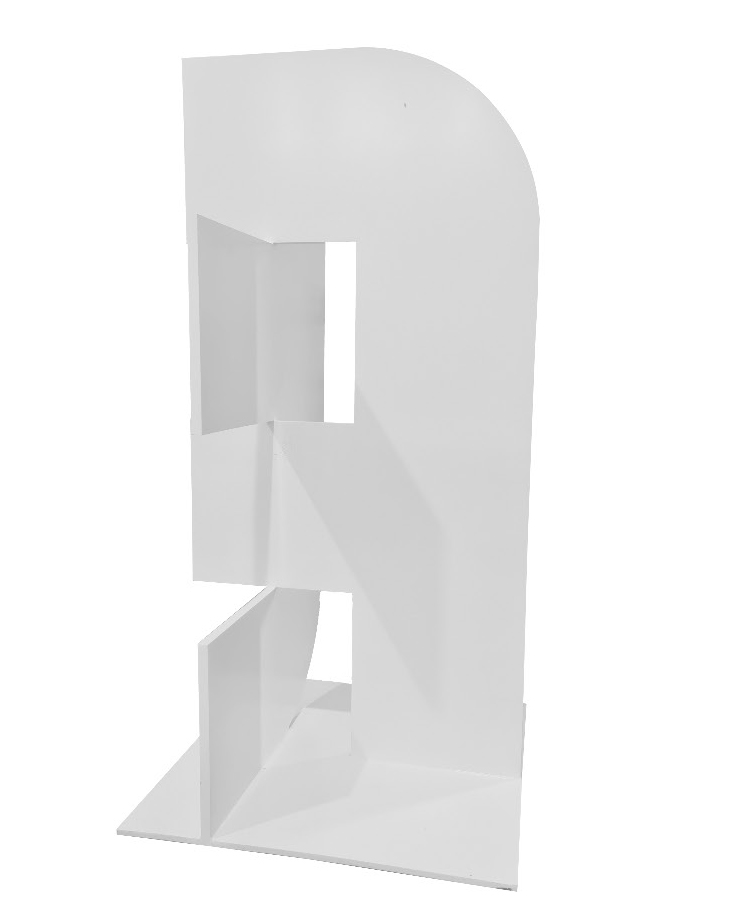
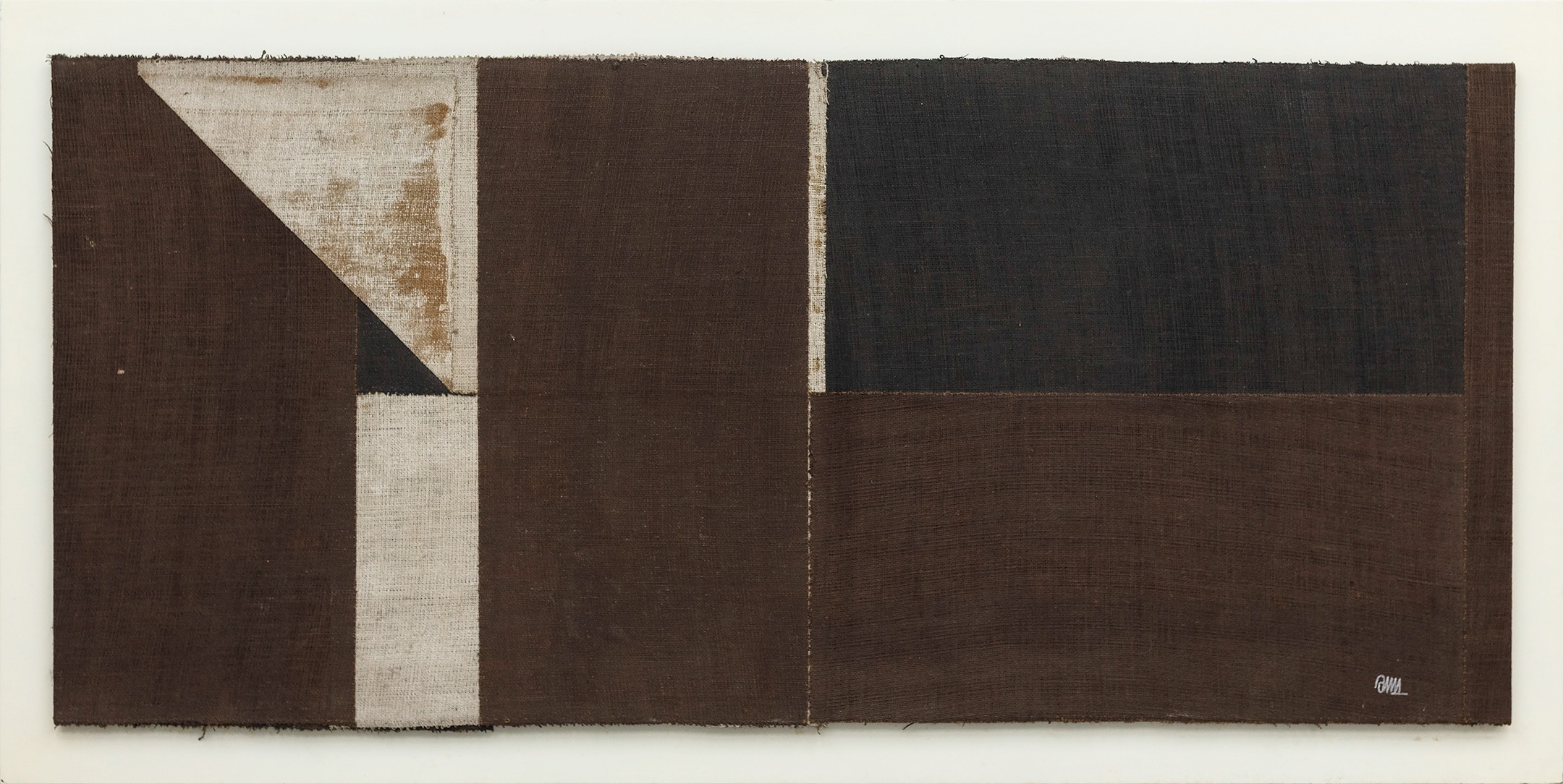
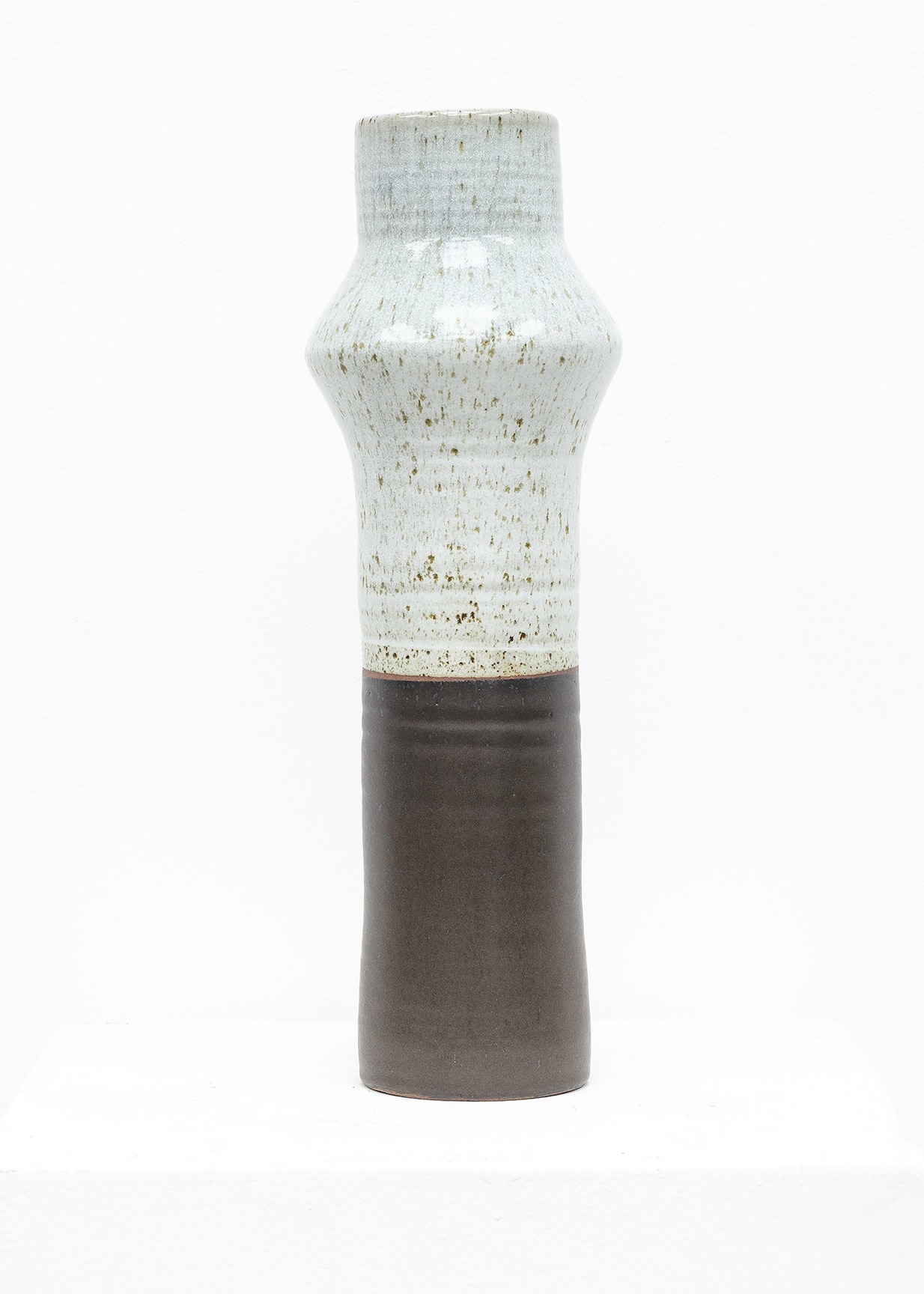
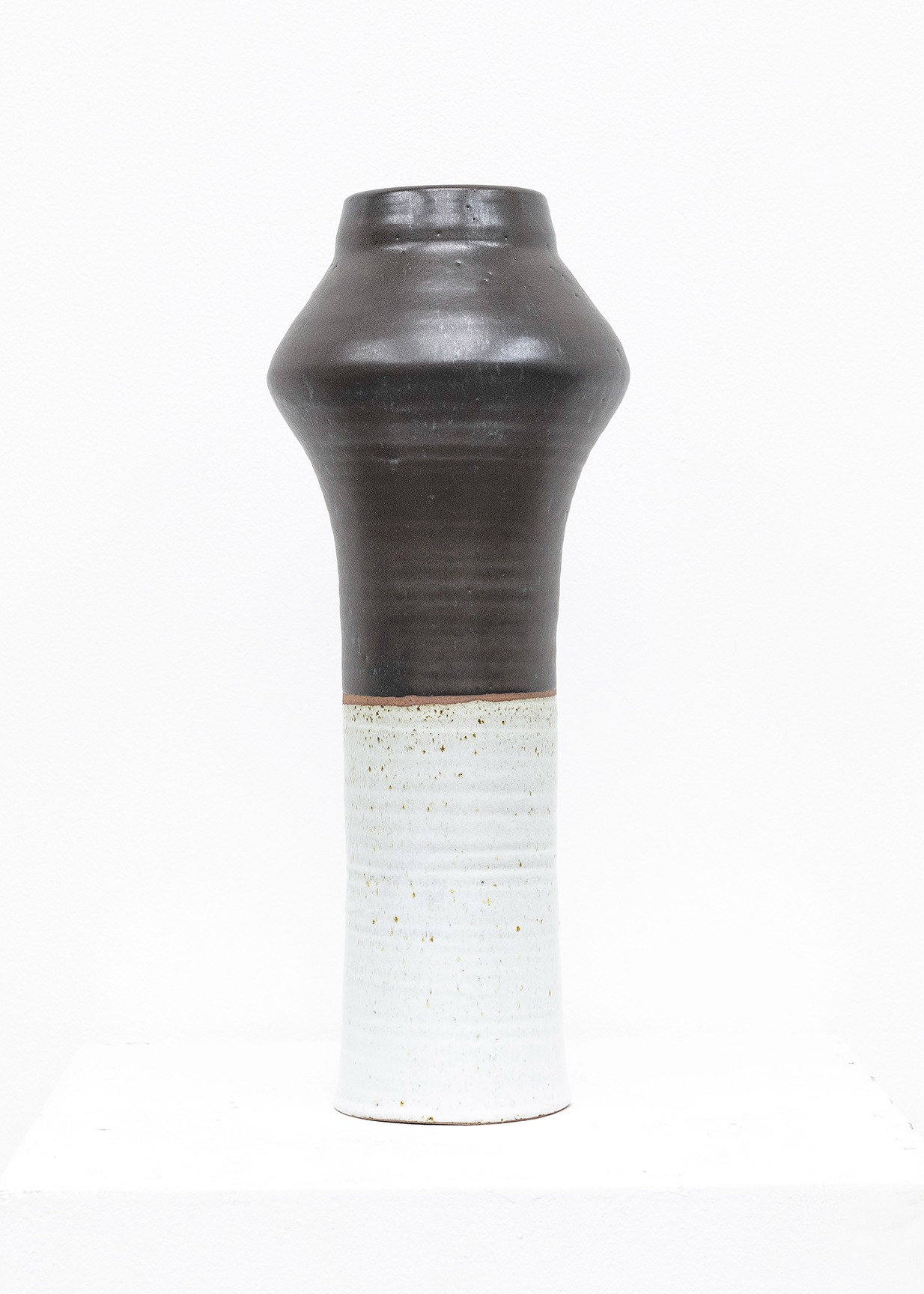
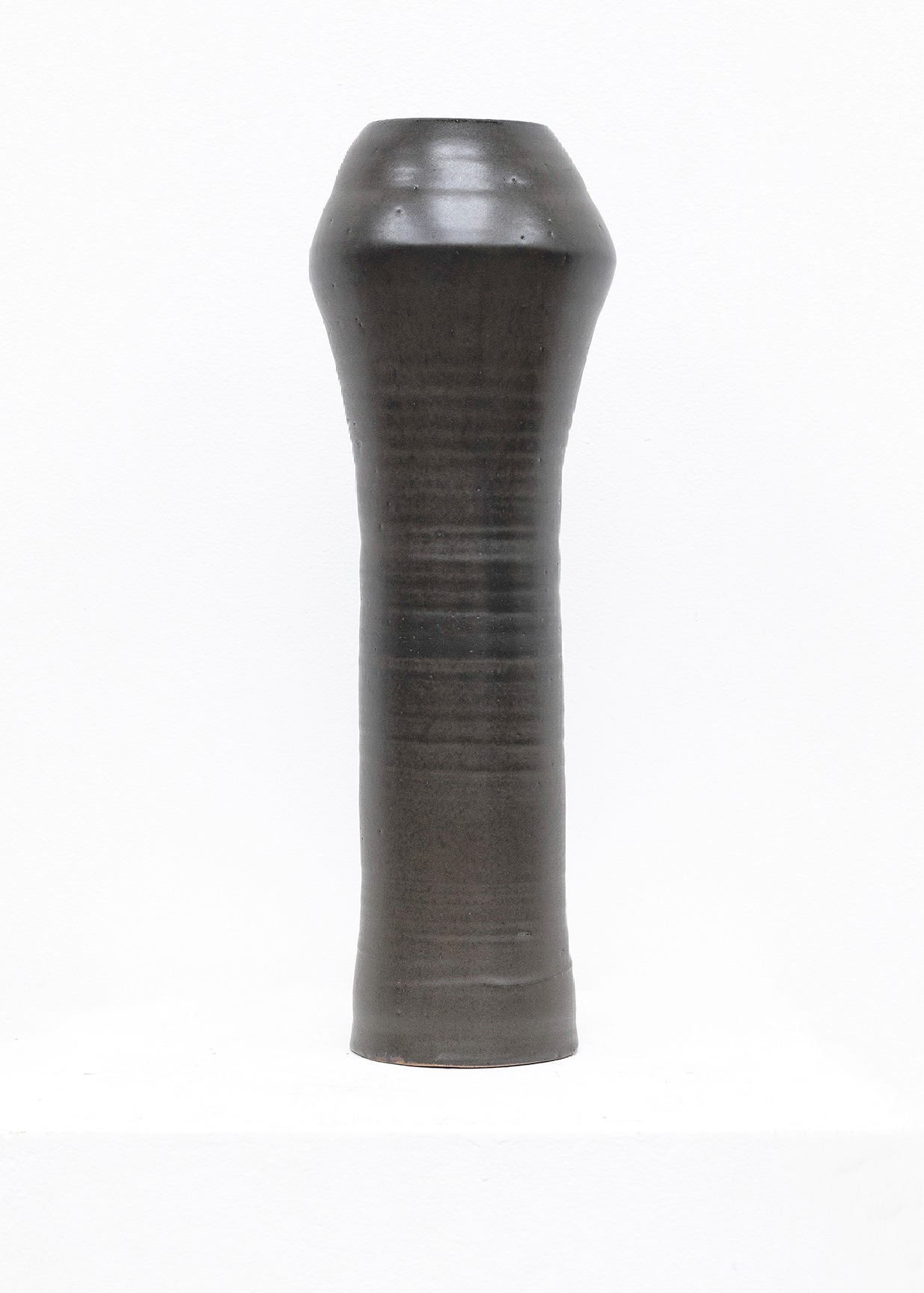
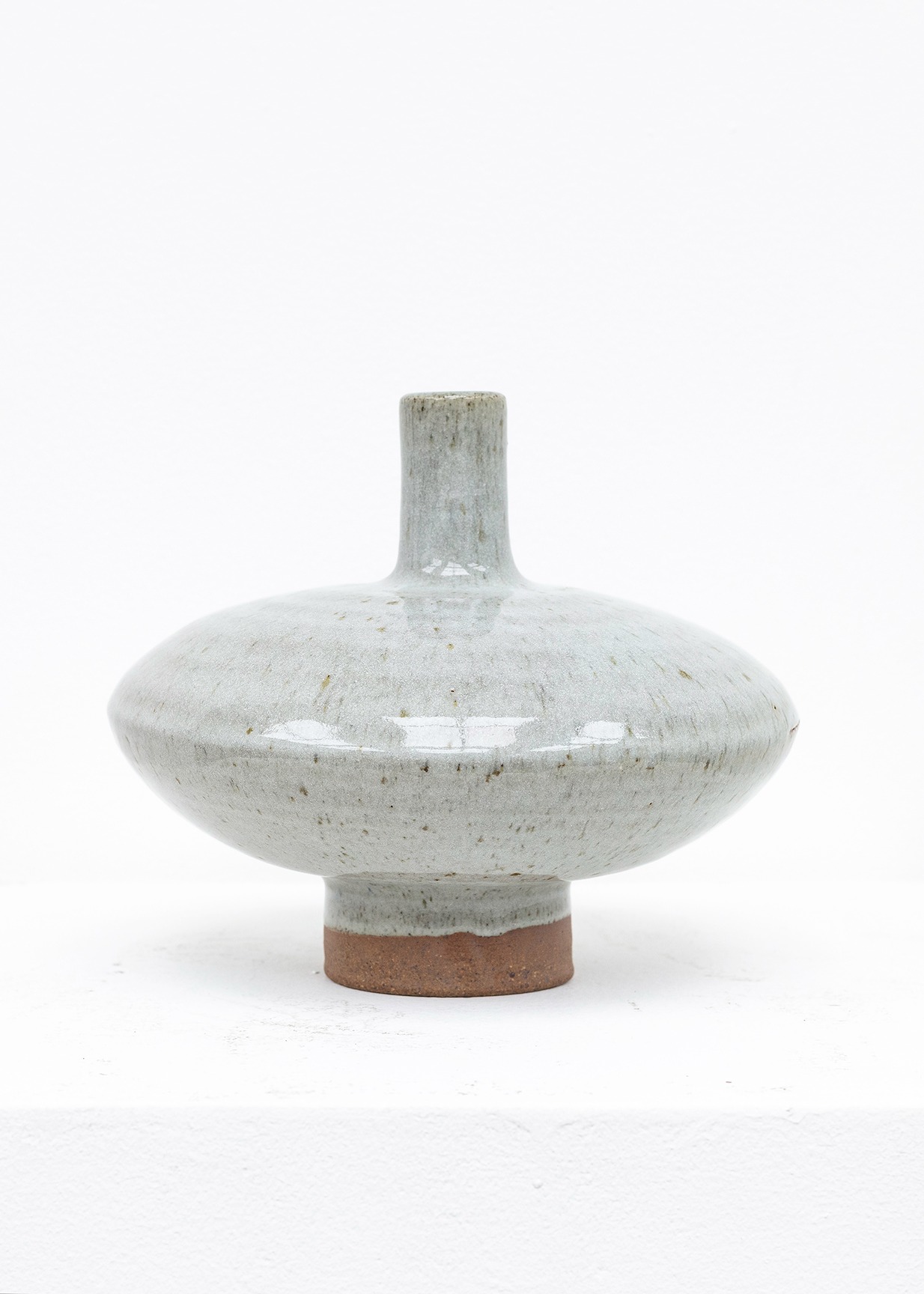
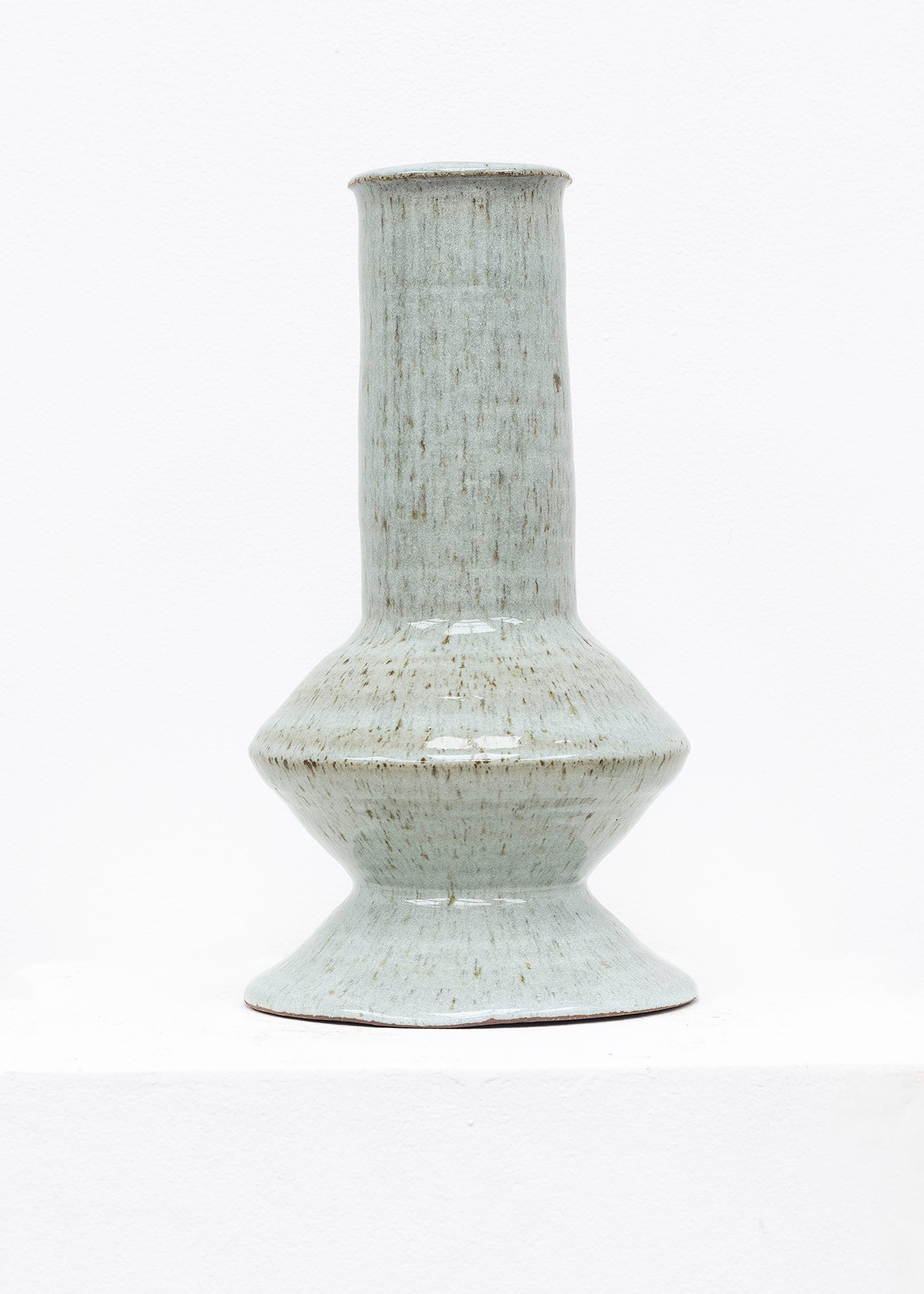
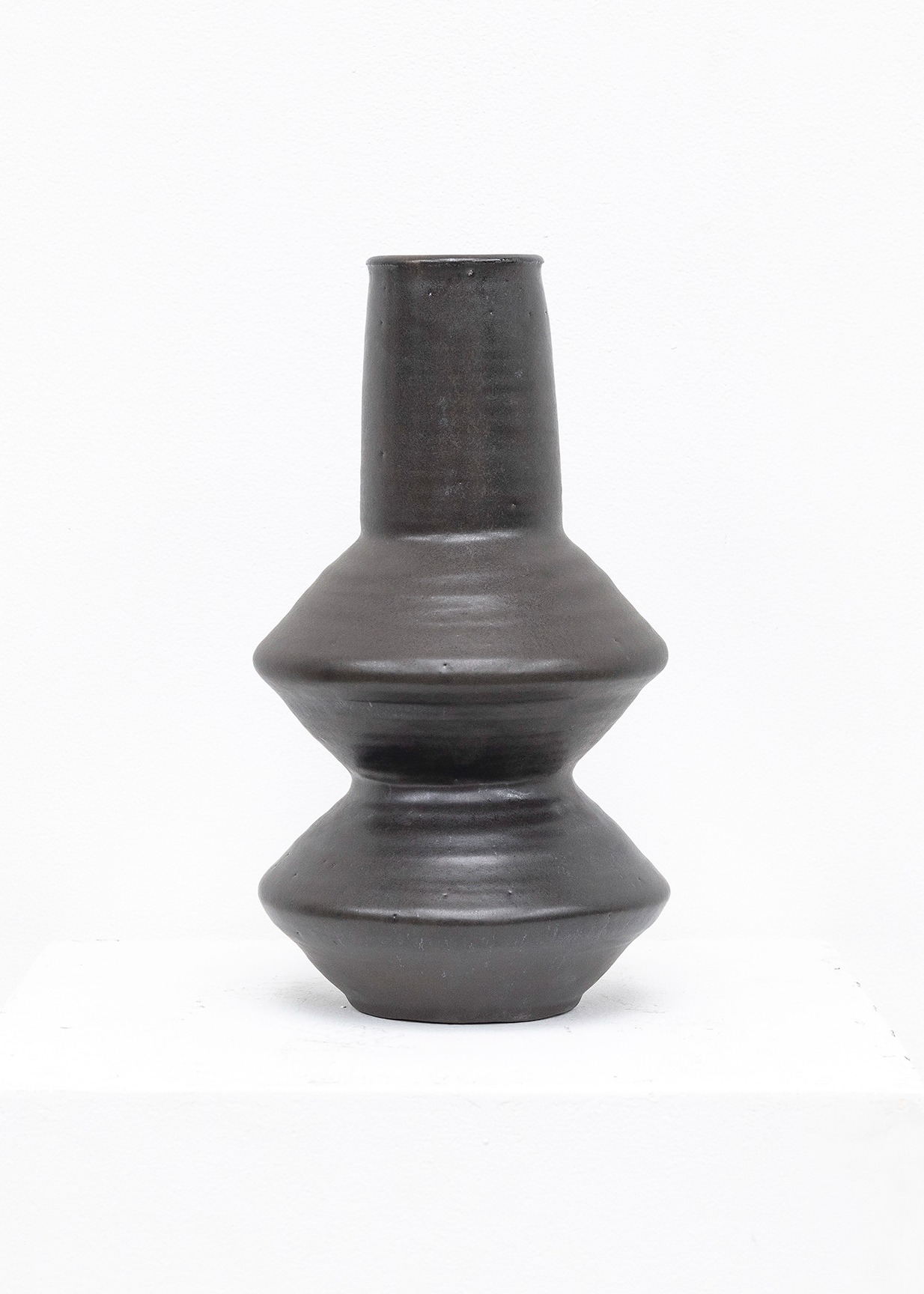
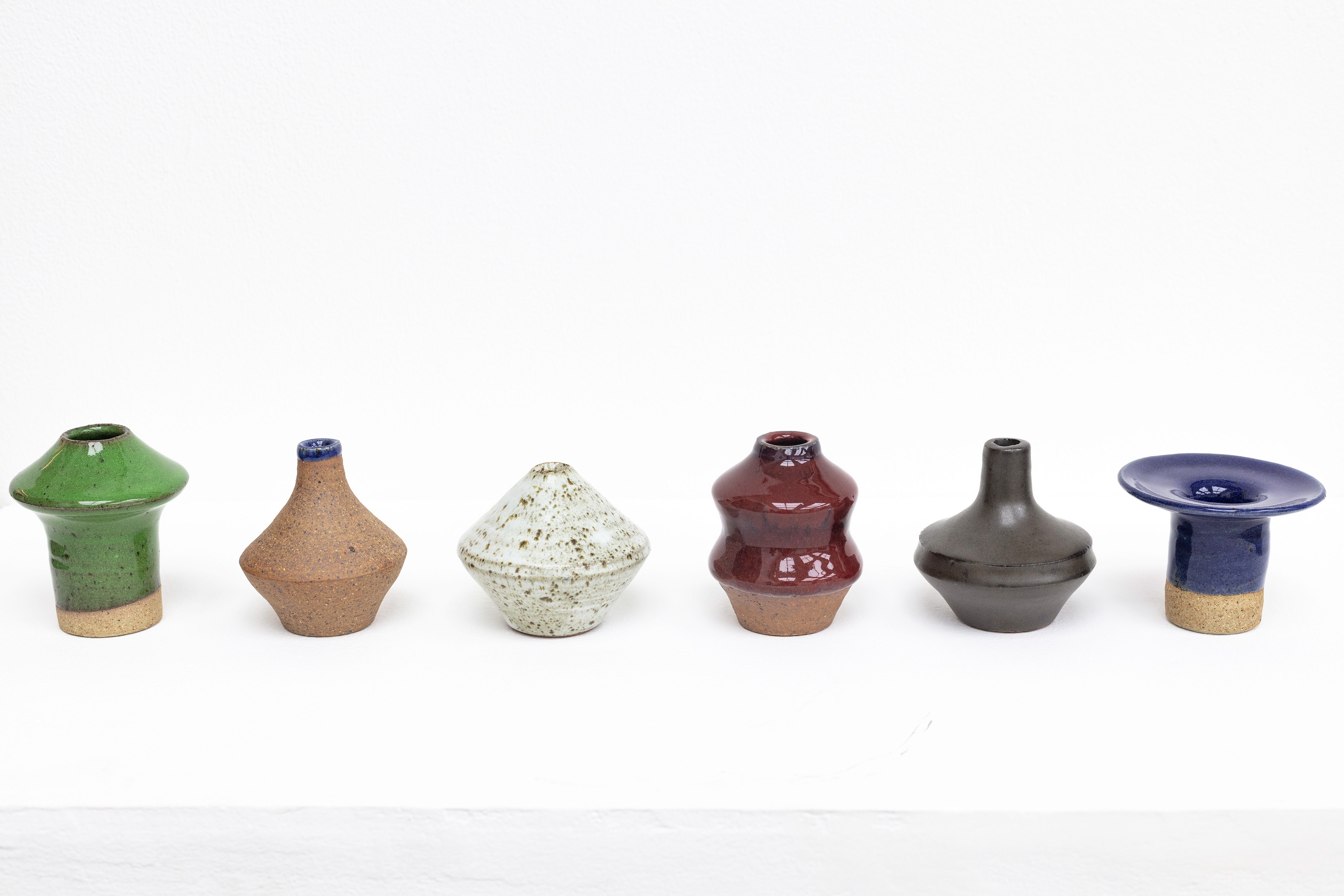
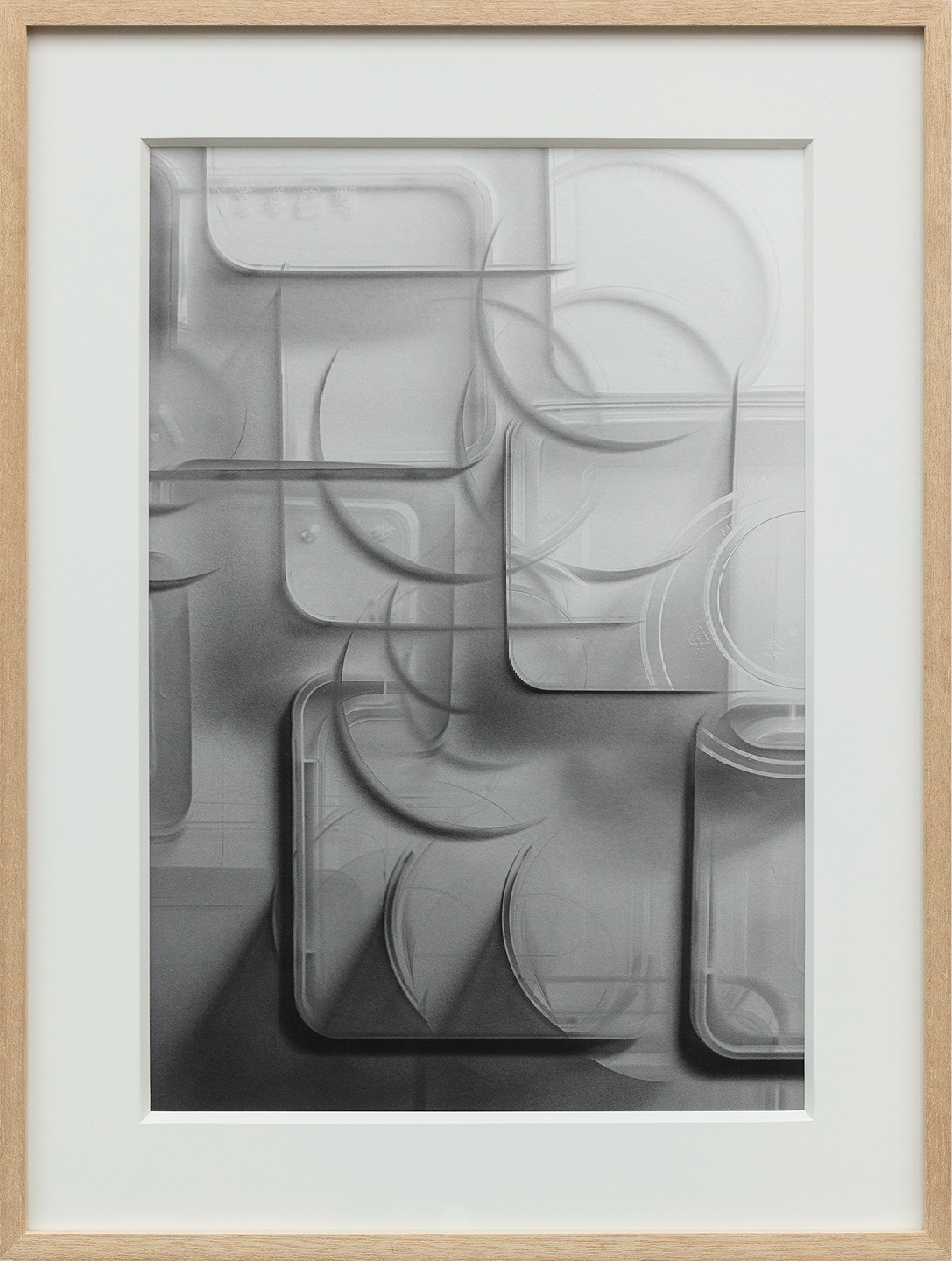
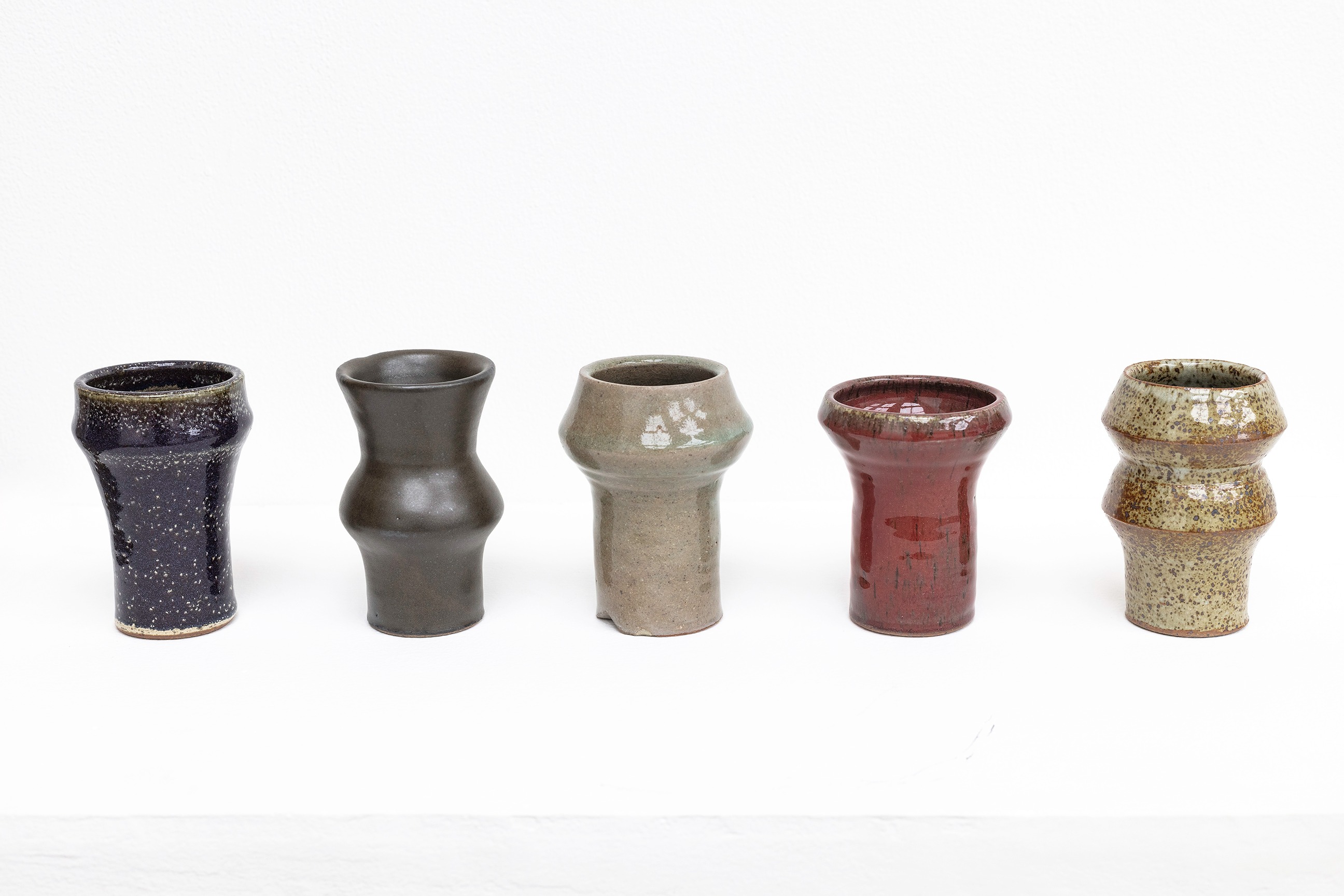
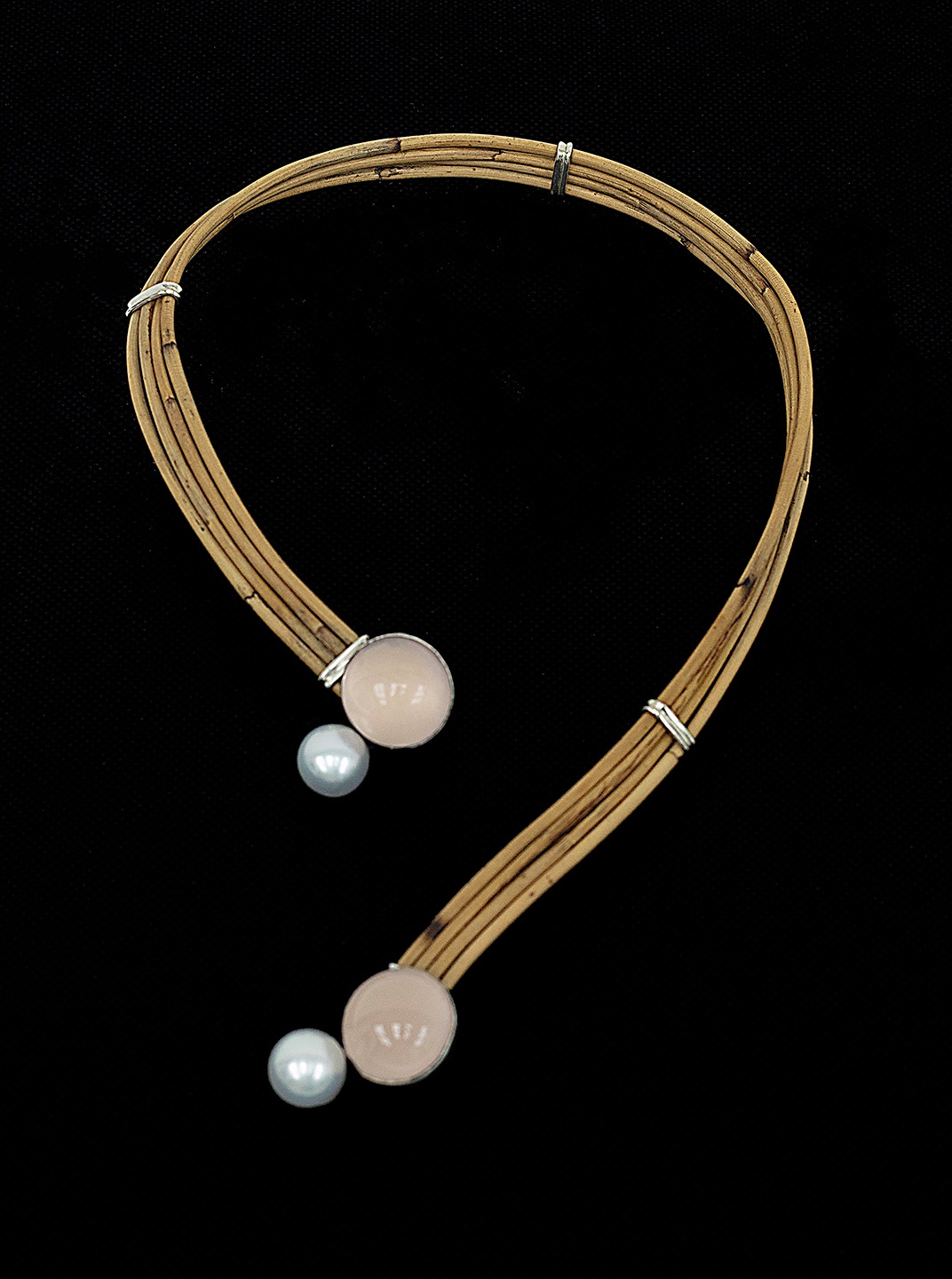
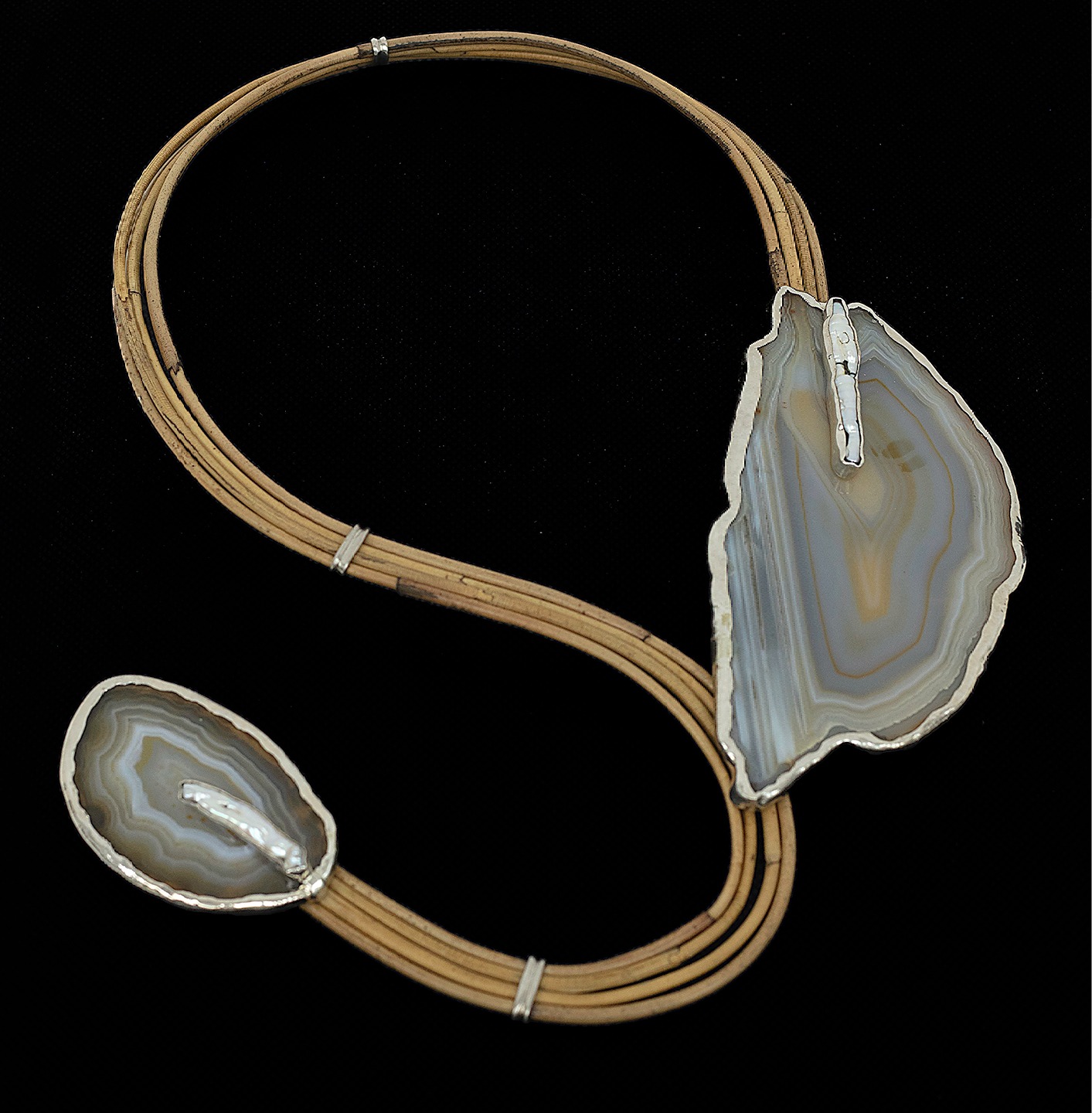
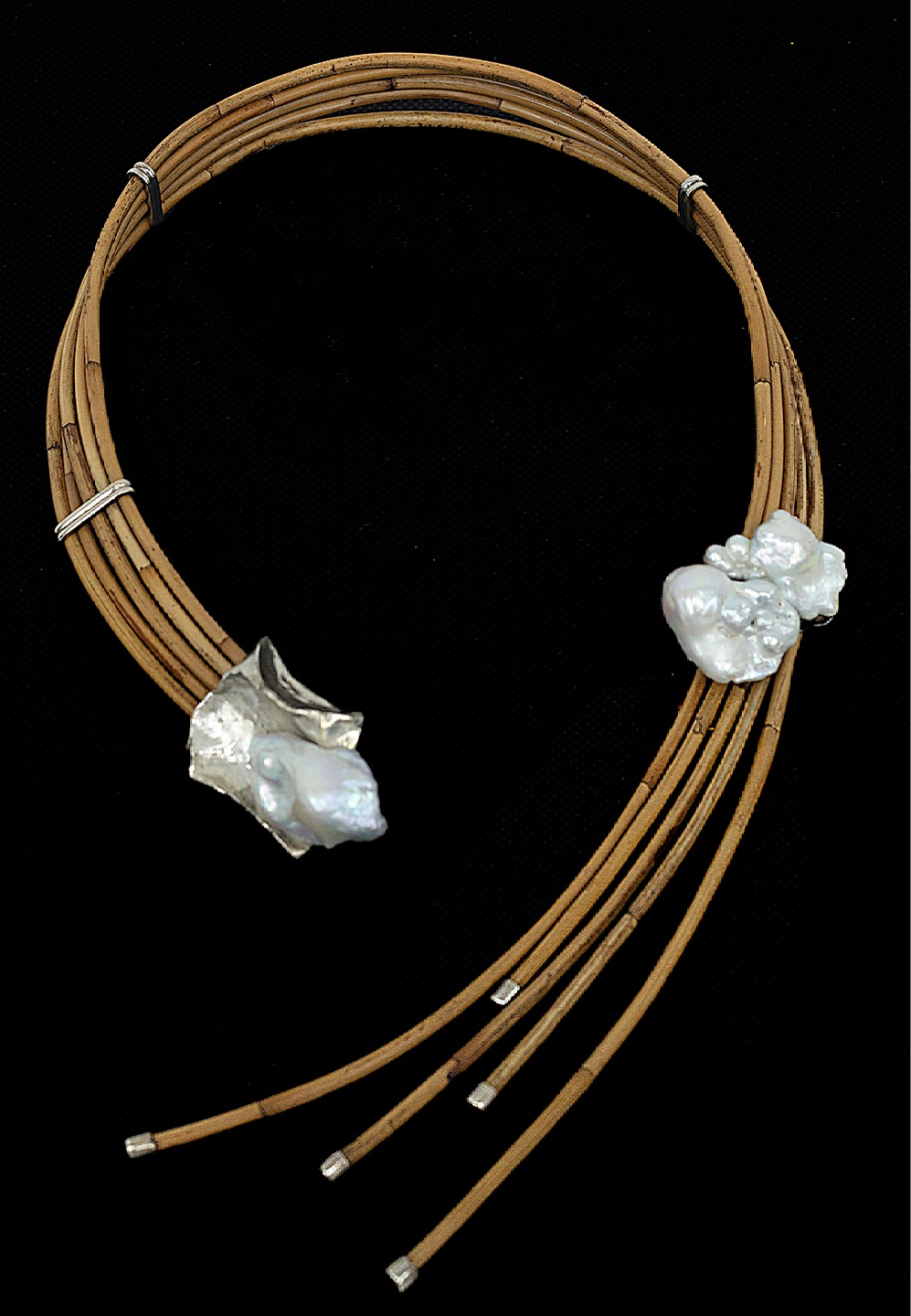
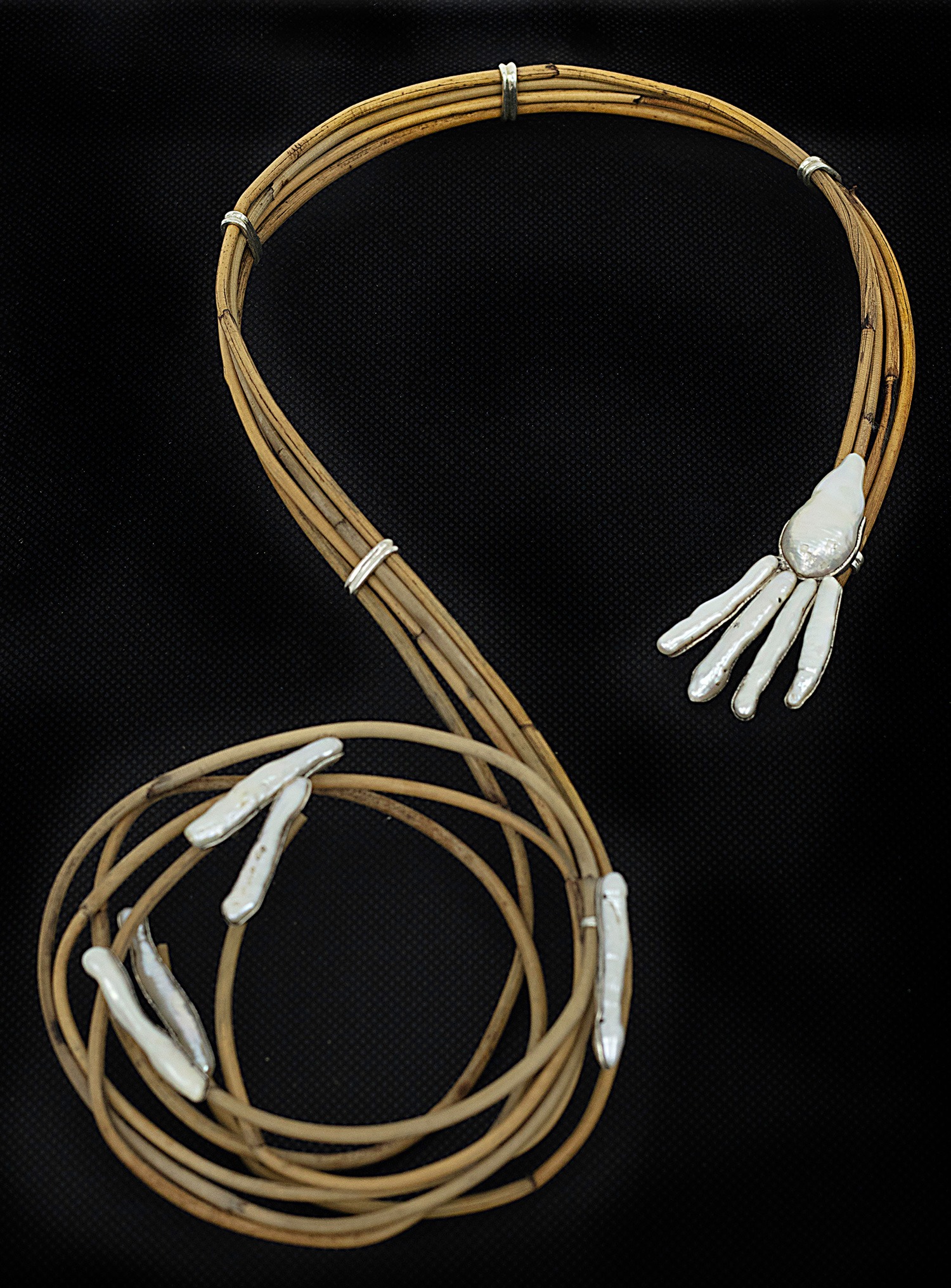
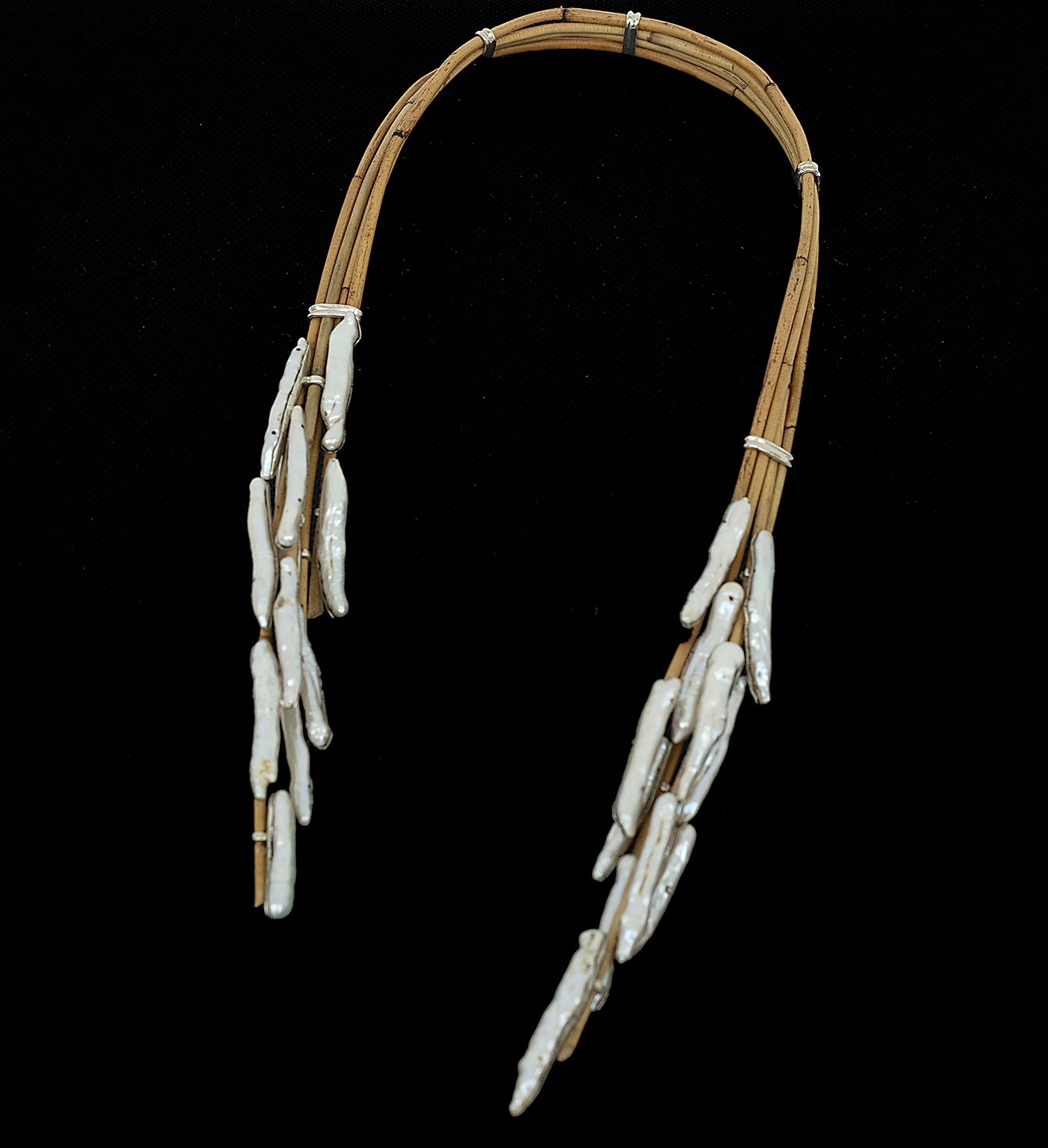
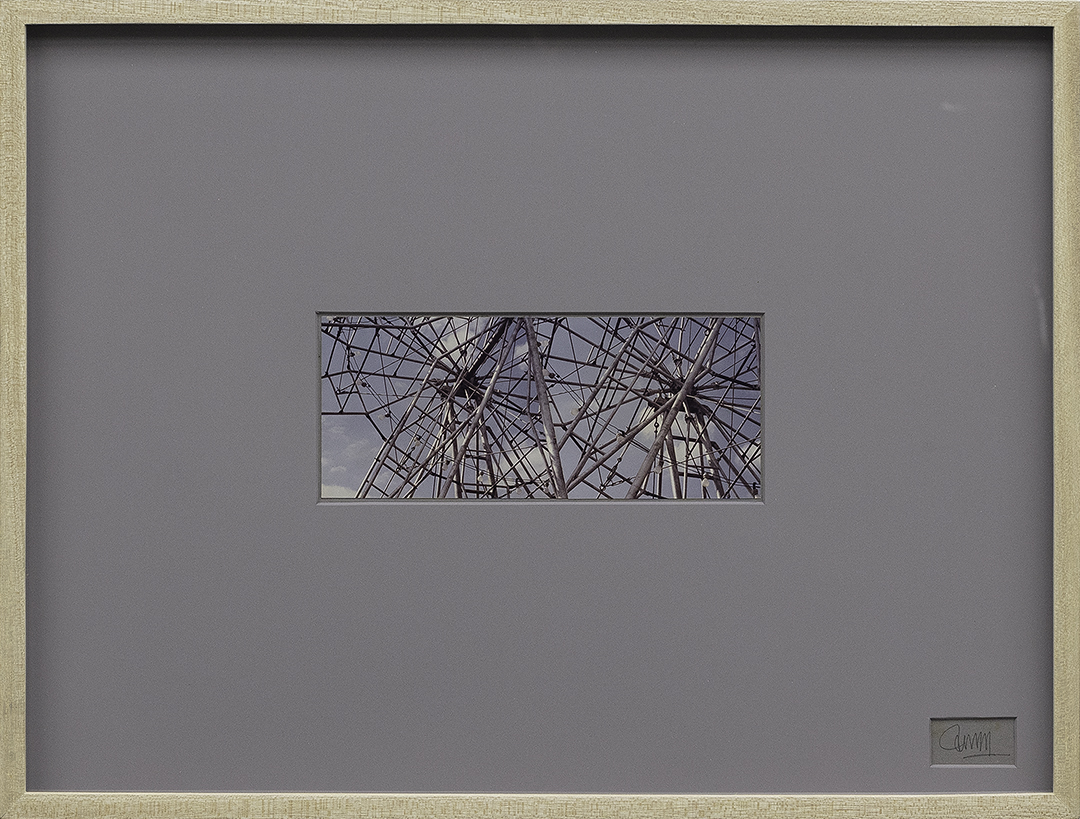
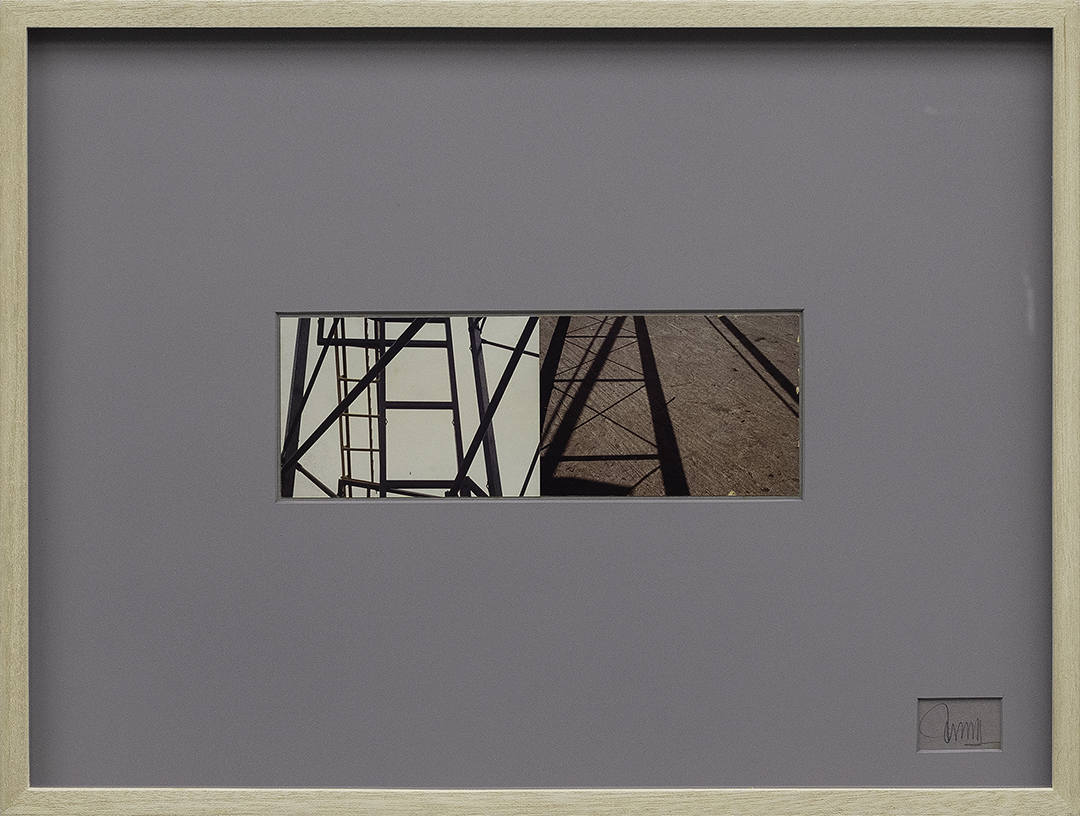
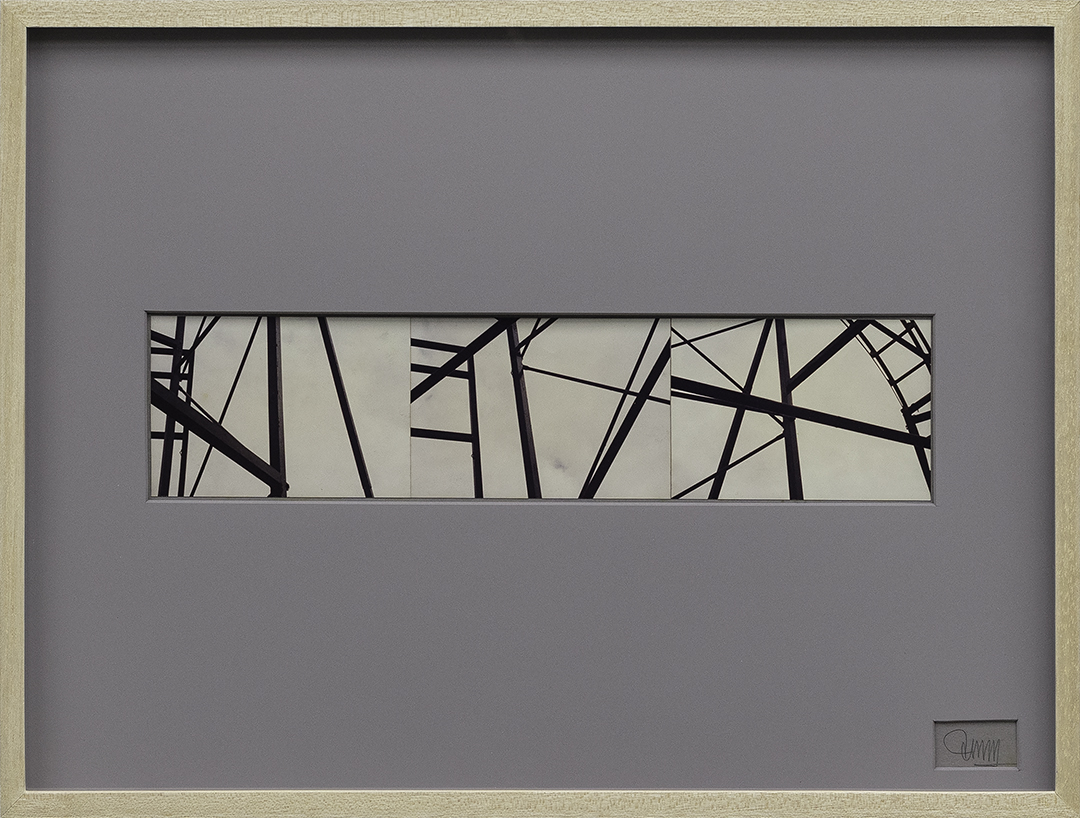
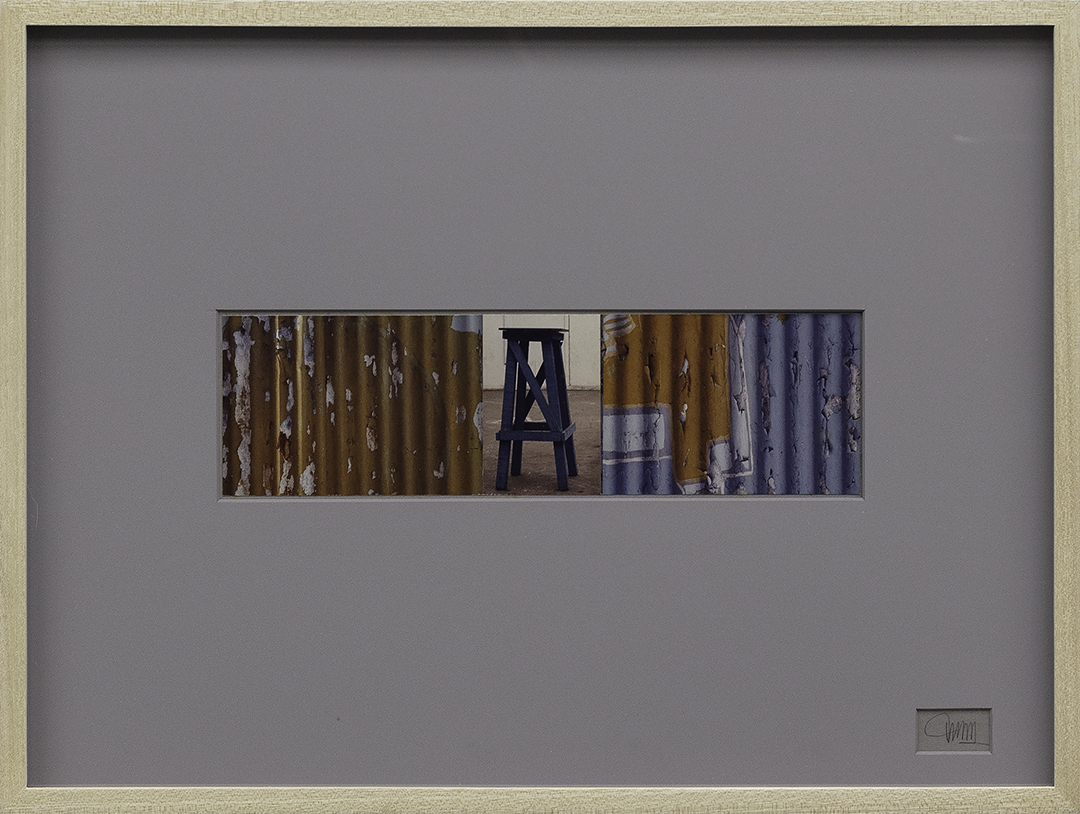
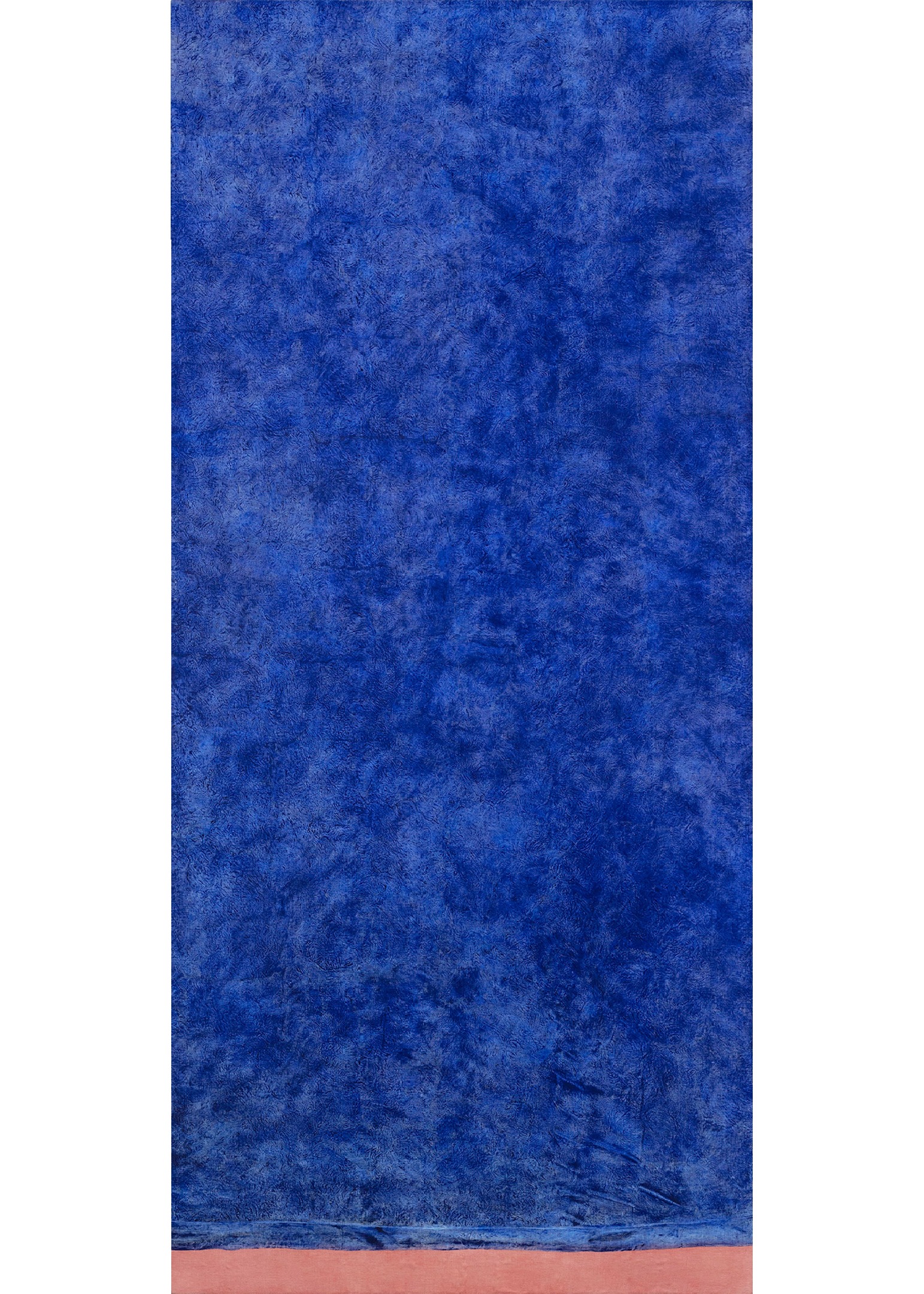
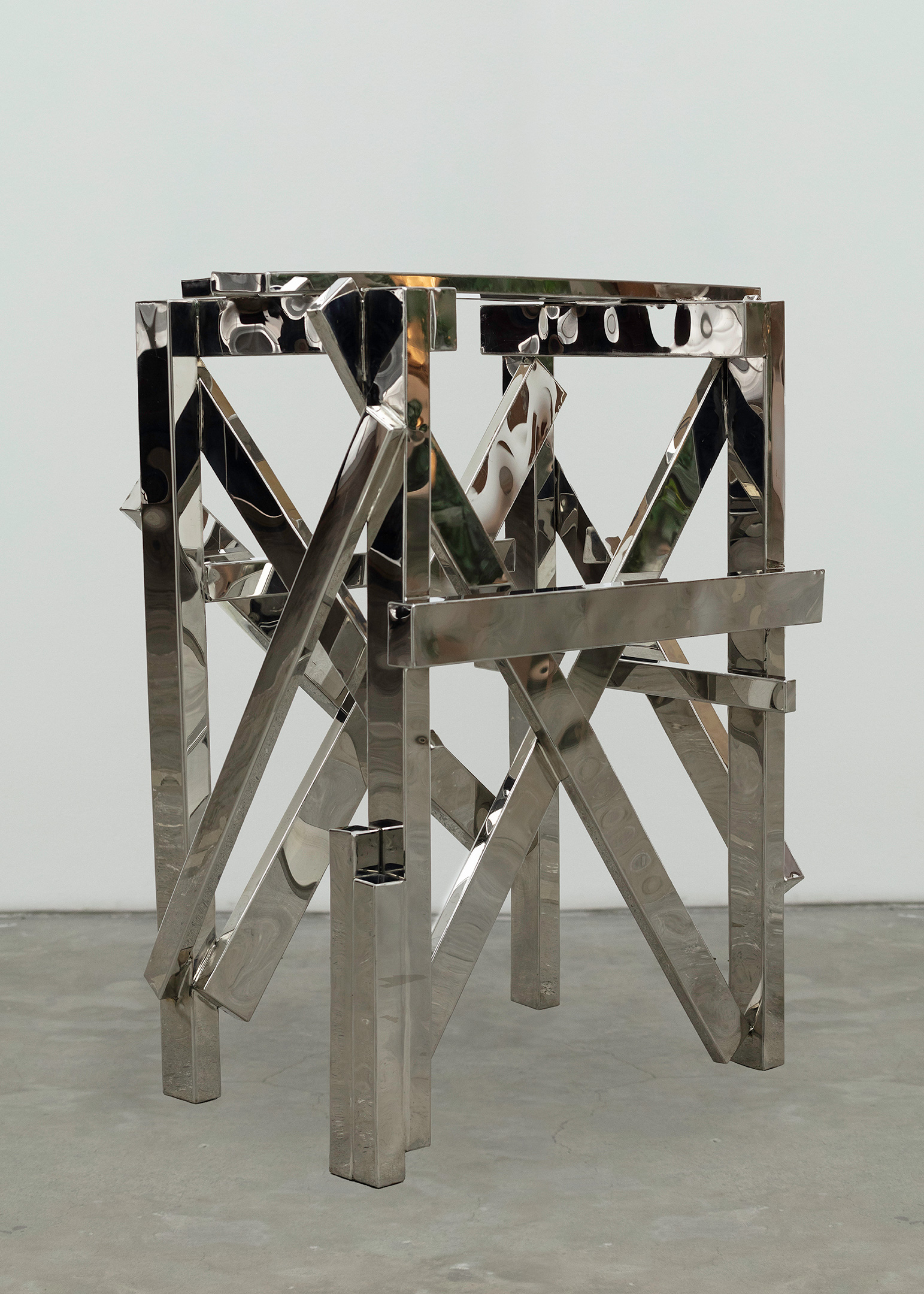
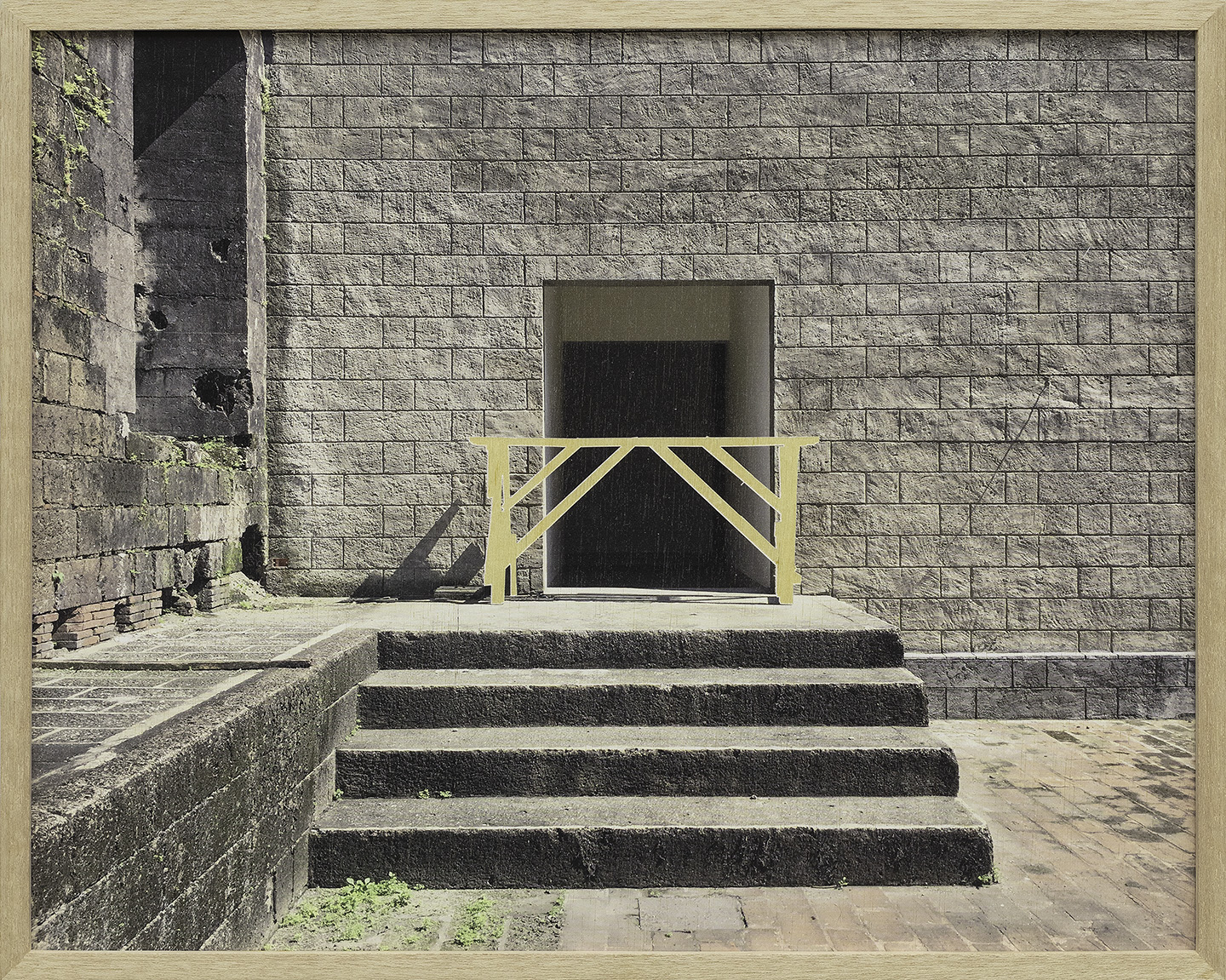
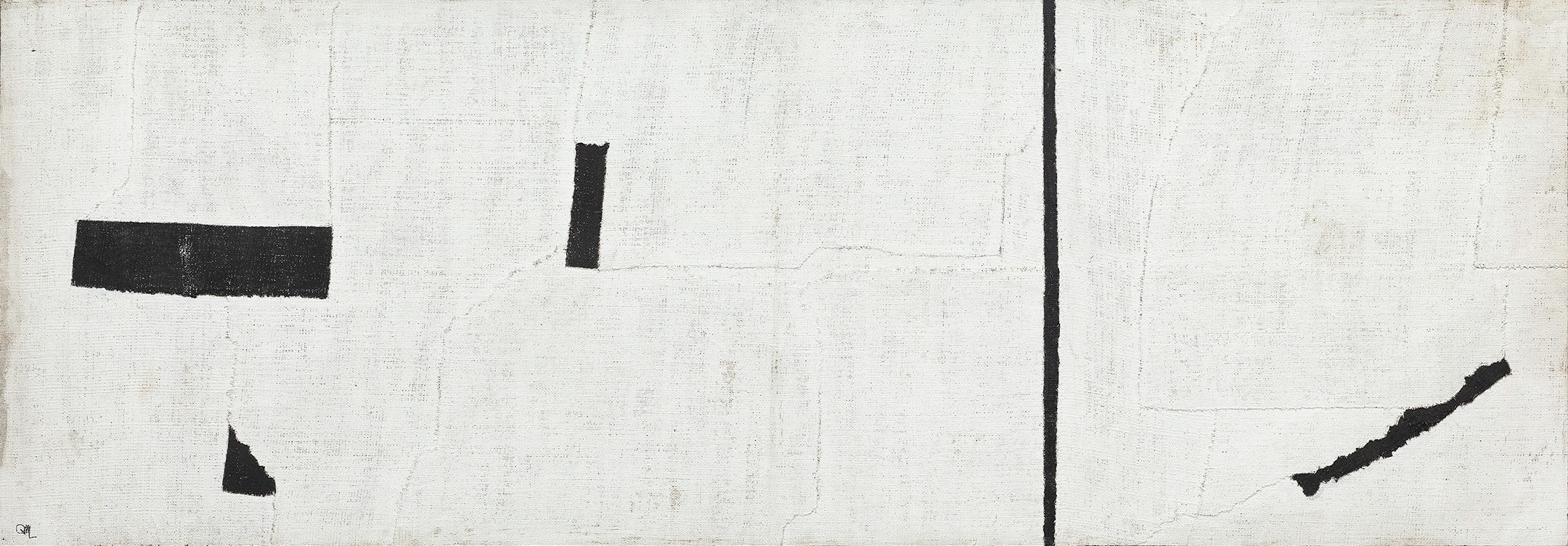
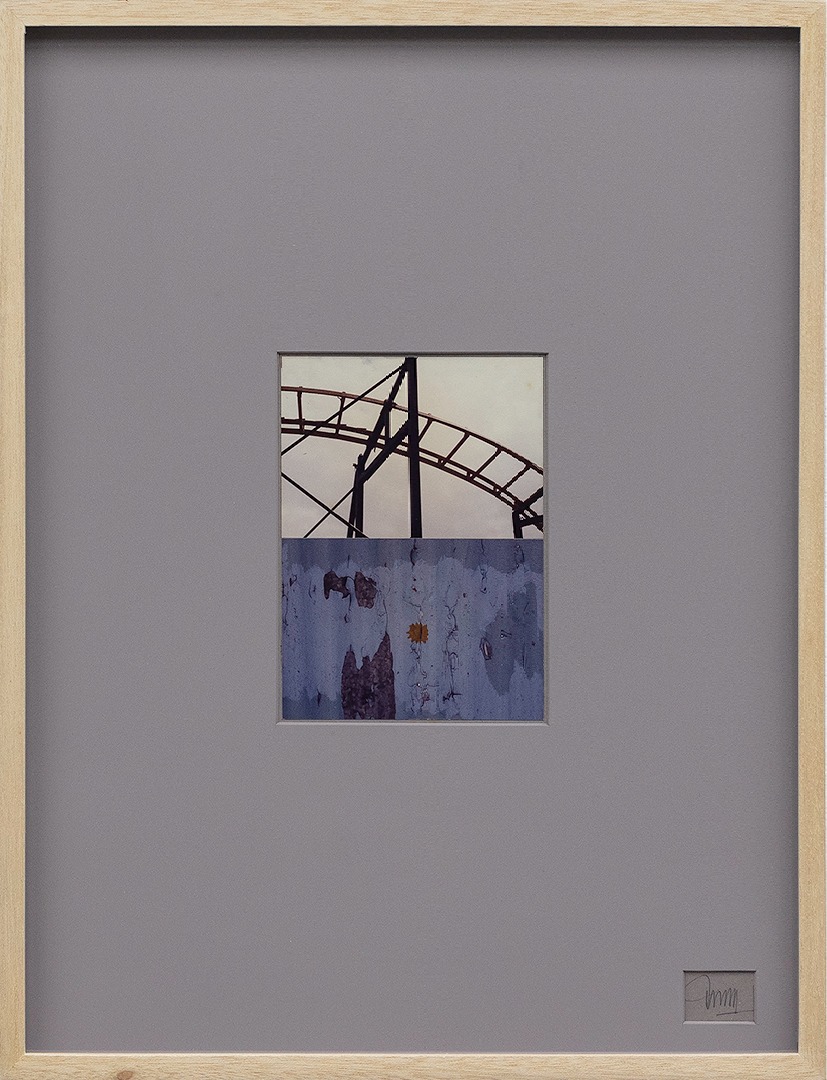
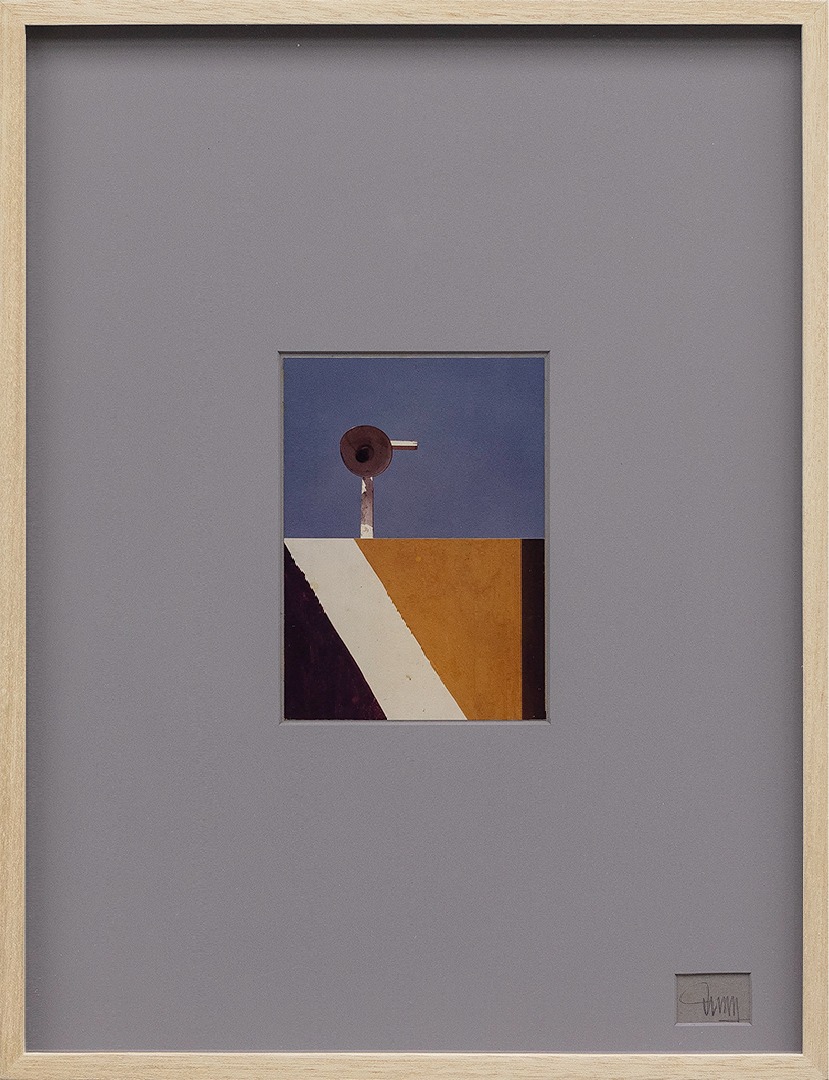
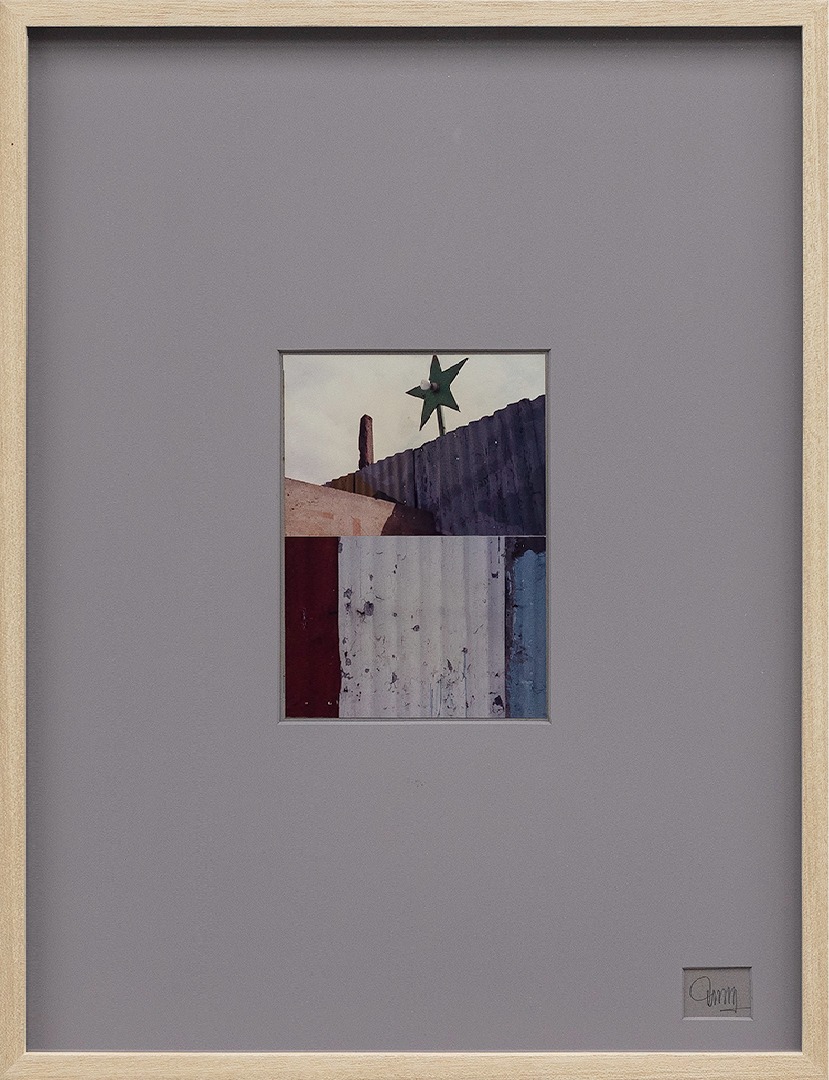
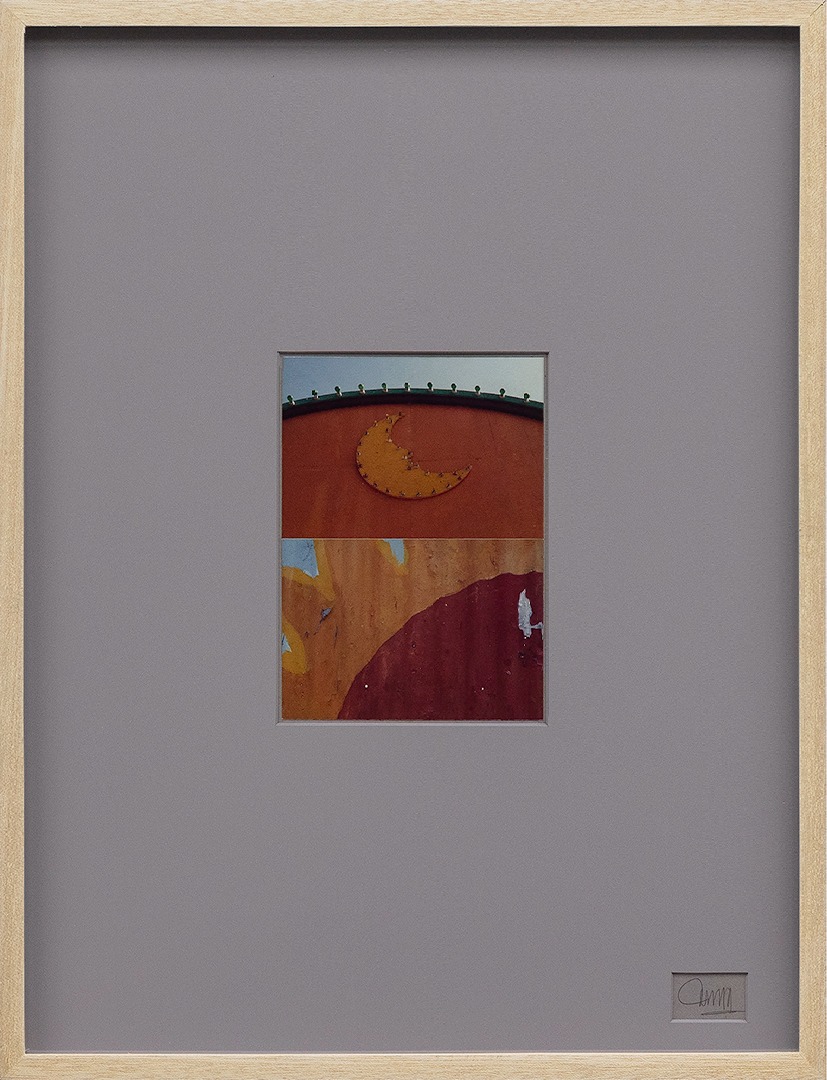
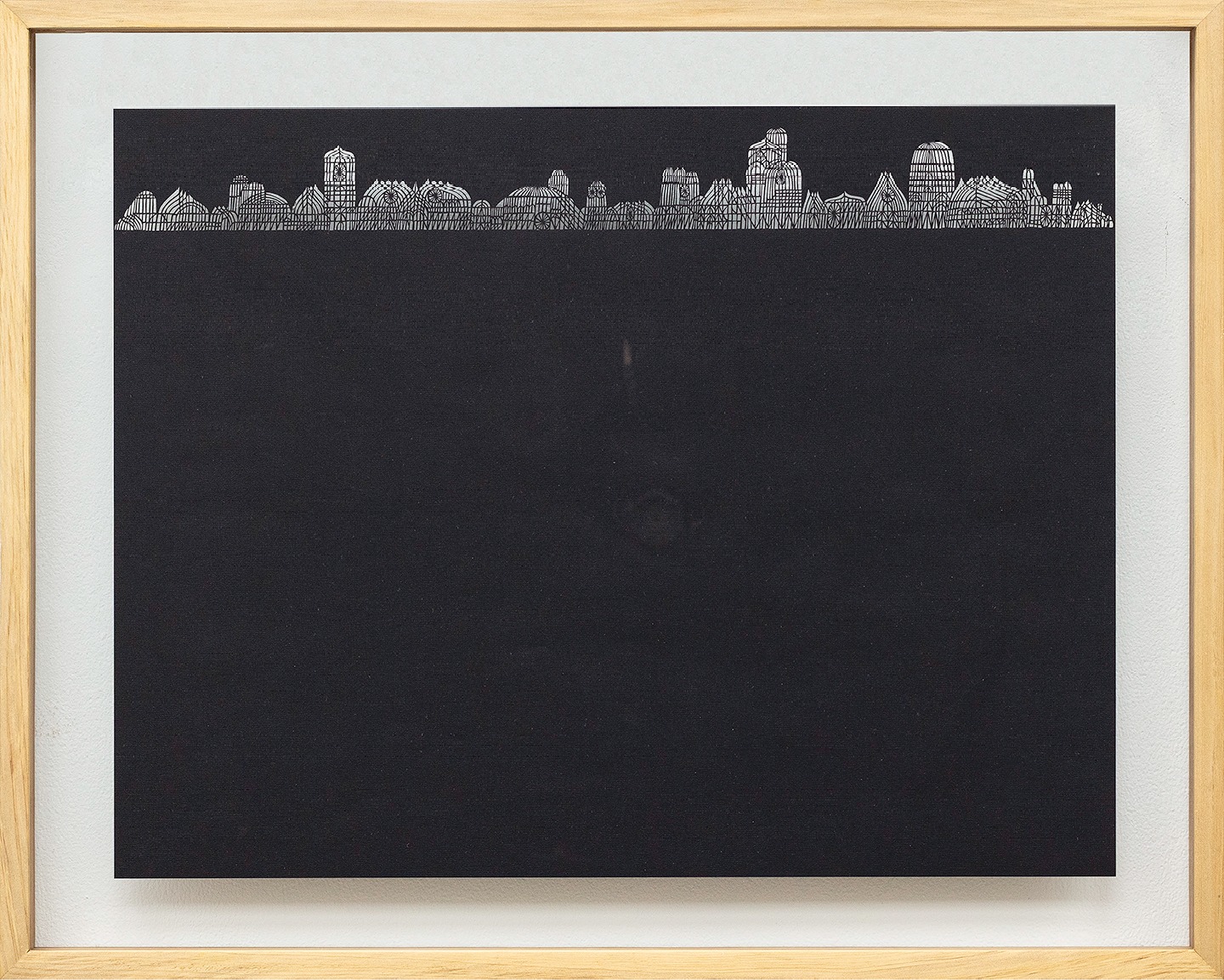
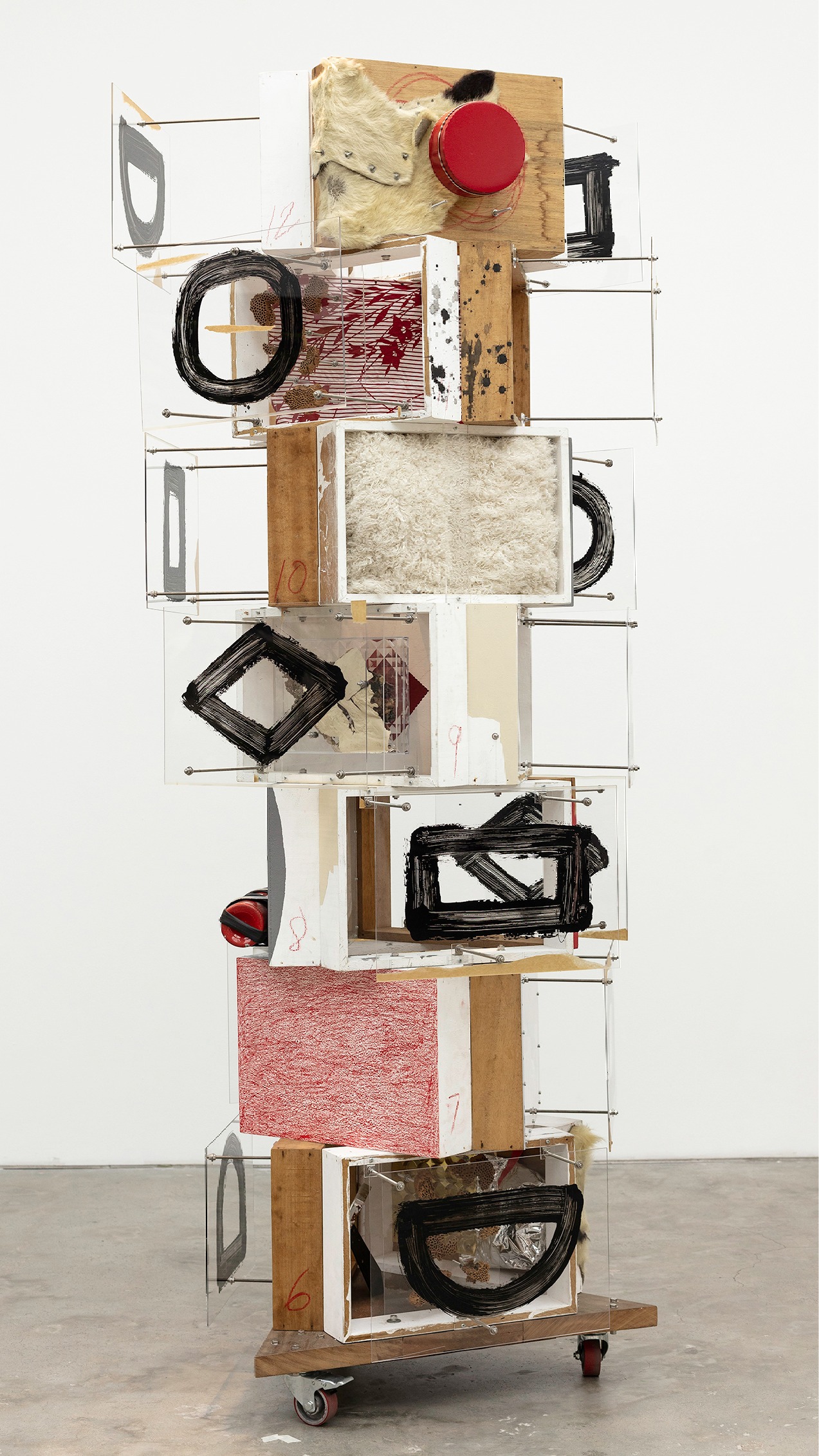
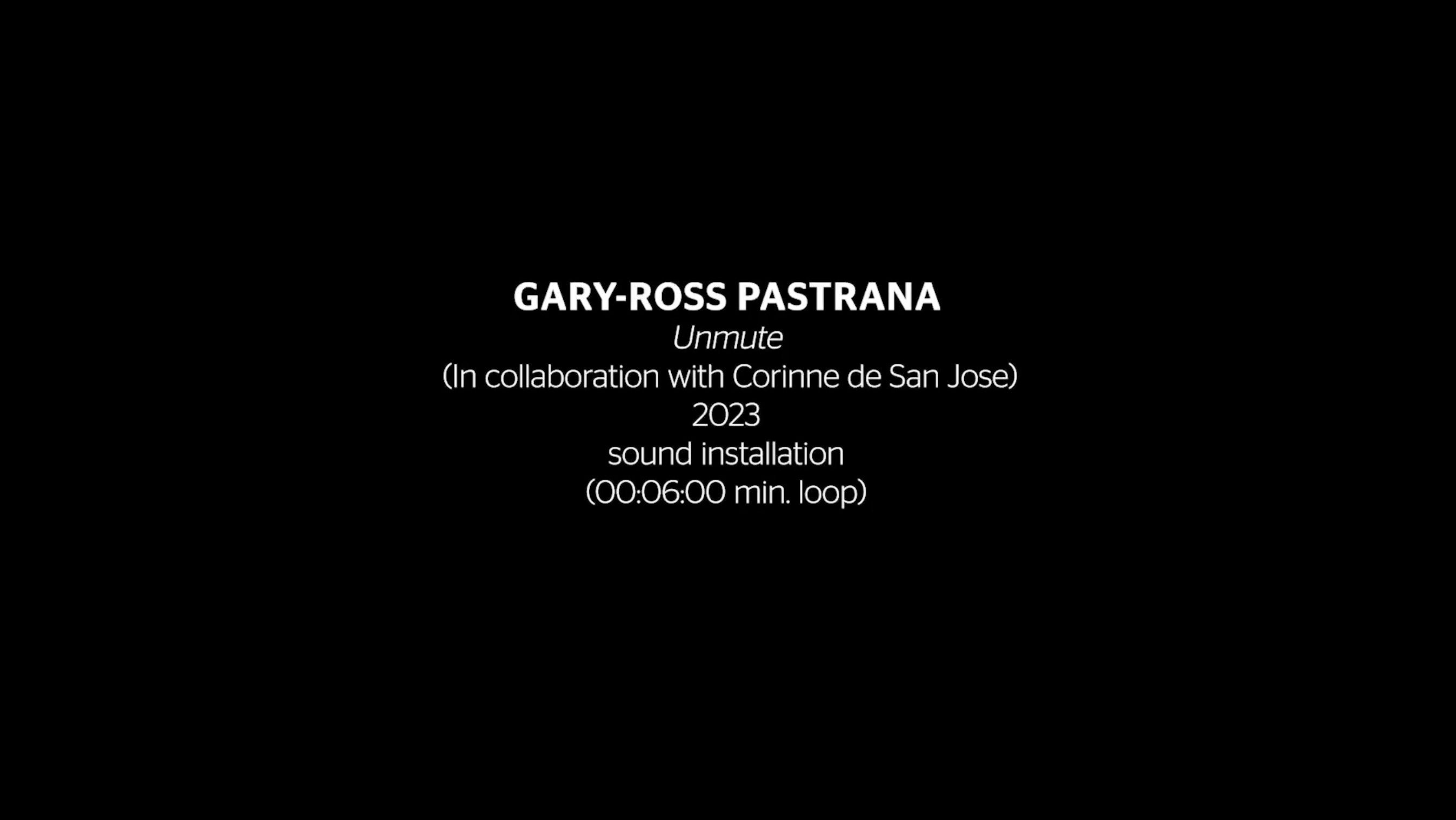
I thought it would be interesting to reintroduce some of these elements back into the exhibition, to present something close to a missing score of these otherwise hushed, silent pictures. I sought the help of fellow artist and award-winning Sound Engineer Corinne de San Jose to help realize this piece."
- Gary-Ross Pastrana
